Dakshina Chitra Heritage Museum in Muthukadu, Chennai : The Living History Museum – Best South Indian Museum on Arts, Architecture, Crafts, and Traditions – Visit, Travel Guide (Part 1) – Updated
– award-winning living museum about south Indian traditions
| CasualWalker’s Rating for DakshinaChitra Heritage Museum: | |

9.8 – Superb Awesome
|
DakshinaChitra is India’s best Heritage Museum, which is a project of the Madras Craft Foundation (MCF), a non-profit organization – for the promotion and preservation of the heritage and cultures of South Indian states like Tamilnadu, Karnataka, Kerala, and Andhra Pradesh.
This award-winning living museum recites the stories of people literally brings the South Indian’s cultural traditions all under one roof. DakshinaChitra heritage museum was is opened in December 1996. The name DakshinaChitra refers to “Picture of the south” exhibits with the goal of promoting South Indian culture on a global scale.
History of DakshinaChitra Heritage Museum:
DakshinaChitra campus is spread over 10 acres, the center has 18 heritage houses from the four South Indian states of Karnataka, Tamil Nadu, Kerala, and Andhra Pradesh, a reception, seminar halls, craft bazaar street, library workshops, art gallery, and restaurant.
The world-renowned architect Sri Laurie Baker planned the entire structure, and the museum was built under Baker’s student the architect Sri Benny Kuriakose, who designed the heritage home buildings and their’ re-creation on the path set by Baker in Dakshinachitra.
Sri Dr. Deborah Thiagarajan – Founder of Dakshinachitra:
Sri Dr. Deborah Thiagarajan, who is the founder of Dakshinachitra, also an Indian art historian of American origin, who founded an NGO, the Madras Craft Foundation (MCF) in 1984 with the intent of preserving the regional culture and heritage, incorporated Laurie Baker’s design principles and transformed them into what is now Dakshinachitra.
Dakshinachitra Museum Architecture:
Sri Laurie Baker – Key Architect of DakshinaChitra:
Sri Laurie Baker who is called the “Gandhi of architecture” is the Key Architect of DakshinaChitra. He was a British-born Indian architect who was an expert in India-based low-cost building design with maximum efficiency and with great aesthetics at Dakshinachitra.
Sri Benny Kuriakose who is associated with Baker and Debbie in 1984 with Madras Craft Foundation also made a great Architectural contribution to the Dakshinachitra. Various government ministries and organizations, including the Ministry of Textiles, the Ministry of Culture, and the Ford Foundation, are also supported the initial funding of Dakshinachitra. To Know more details about the Dakshinachitra Museum Architecture, please refer Sri Benny Kuriakose‘s website.
DakshinaChitra’s dwellings aren’t just model homes, they’re real residences that were taken from all around South India and restored at the DakshinaChitra. The houses were brought, systematically dismantled, transported, and restored by expert artisans in their own unique style retaining all their original features that integrate harmoniously while respecting our Indian heritage and culture.
The fact that the furnishings and artifacts in these homes are also carefully picked and retained. Every house here is an authentic representation of the traditional houses of South India much in detail including the items used in daily life, the various kinds of articles used during cooking, worship, equipment needed for their work, vintage vessels, kitchenware, furniture, and so on.
DakshinaChitra is mainly divided into four divisions, each symbolizing one of the four states of South India – Tamilnadu, Karnataka, Kerala, and Andhra Pradesh. Every type of house has a treasure trove of classic history. This living museum offers fascinating insights into art, architecture, and lifestyles in South India.
At the DakshinaChitra campus, there were proper signboards or direction boards were fixed on paved paths to guide visitors. In addition, we had a leaflet in our hands given to us along with entry tickets, so we knew exactly which direction to travel.
Currently, this heritage museum – Dakshinachitra is celebrating its 25th anniversary with an exhibition highlighting Laurie Baker’s art. The exhibition that is on till January 30 is a tribute to Baker who designed and created the museum at DakshinaChitra. The exhibition is between 10 am and 5 pm at Varija Art Gallery.
Dakshinachitra is one of the best places to visit if we want to learn more about the early diverse heritage and culture of South India.
At the Dakshinachitra campus, the Tamil Nadu House is the first heritage location on our tour.
Tamil Nadu Heritage Houses:
The Tamil Nadu Heritage houses consist of seven traditional houses and three separate galleries, and one Lord Ayyanar temple. There were replicas of 6 varieties of Tamilnadu House like the Merchant house, Agriculturist house, Potter’s house, Basket weaver’s house, Bramhin House, Silk Weaver’s house.
Also, there were halls dedicated to art and textile exhibition. The Tamil Nadu section has the direct input and contribution of the Sri. Laurie Baker, the key architect of Dakshinachitra.
Tamil Nadu Merchant House – Chettinad, Pudukkottai District :
The Tamil Nadu Merchant House is the typical Chettiar House of South Tamil Nadu and also it serves as the primary attraction of Dhakshinachitra. The ancestral home here belongs to the Kandanur village of Ramanathapuram District.
This house represents the Chettinad residences of the Nattukottai Chettiars, a merchant society found distributed over in the present-day Tamil Nadu districts of Ramnad, Pudukottai, and Sivaganga. Chettiars, the Burma traders usually built their houses with Burma teaks which are withstanding for very long times. Dhakshinachitra Chettinad’s house is also inbuilt with these Burma teak pillars.
This house has a typical huge inner courtyard with thin stone pillars on all sides within the Chettinadu home. A succession of rooms is created around the inner courtyard for the purposes of sleeping, storing grains, and praying. Within the house’s interiors, we will be enchanted by the classic flavors of the Chettiar lifestyle.
Parts of this house have been transformed into a museum portrays the vernacular clear view beautifully about Tamil Sangam landscape:
Kurunji – Represents the mountainous regions.
Mullai – Represents the forest regions
Marutham – Represents the croplands
Neithal – Represents the seashore
Palai – Represents the desert
The landscapes – the Kurunji and Mullai are termed as Pallai during dry periods.
Agraharam Brahmin house – Ambur Tirunelveli District :
The Agraharam Brahmin house has been relocated from an agricultural village called Ambur Tirunelveli District. This Brahmin house has been relocated from Ambur village, an agricultural village of the Tirunelveli area in the South of Tamil Nadu. They are almost always joined by a shared wall and they are typically narrow and long in width and have open spaces in the back. They are a close-knit community since their houses are usually located on a single street.
The houses in Agraharam are two-storied are often without an interior courtyard and so sunlight and ventilation were obtained through the small windows. The upper floor was used for drying grains and storage. There is also an art gallery at this house.
Agricultural house – Mayavarnam, Thanjavur district :
The Agriculturist house was reconstructed without any change except for its orientation. The exhibition inside the house shows the different crafts that are part of domestic living and the agricultural equipment used for paddy and for dry cropping.
Agriculturist’s house from Sattanur, Mayavarnam district of Tamil Nadu will let us have a peep into the agricultural surrounding of early timelines of Tamil Nadu. The house represents various houses in Mayavaram and Tanjavur districts in and around villages. The traditional household items of agriculturists are on display, which is most common in all Tamilnadu agriculturist houses.
Silk Weavers House:
The silk weaver’s house in Dakshinachitra belonged to Kancheepuram district, a silk-producing town. Traditional craftsmen, such as weavers, do not keep their workshops apart from their homes.
Weaver’s house – Kanchipuram:
The Weaver’s house is an identical replica of a weaver’s house. The house has one functional pit-loom used for weaving Kanchipuram saris. A traditional weaver demonstrates this art. The reeling, twisting, and preparation of the weft tread were carried out in an internal courtyard. A working pit loom for weaving Kancheepuram saris may be found in this home. In the weaver’s house, a live demo of weaving the sari is done.
Potters house:
A potter’s house is comparable to an agriculturist’s house, in that potter’s house has inbuild areas for living and working spaces. The pottery items are in display for sale also. The making of pots is demonstrated in the potter’s residence, and school children are encouraged to join in the hands-on experience.
Textile Exhibition Hall:
The Textile Exhibition Hall displays textiles of Tamil Nadu prevalent throughout the state, including regional saris, men’s wear, textiles of trade, and textiles of rituals.
Potter’s House – Chengalpattu district:
The Potter’s House represents two practicing Potter’s families. The potter’s house is comparable to an agriculturist’s house, in that potter’s house has inbuild areas for living and working spaces.
The pottery items are in display for sale also. The making of pots is demonstrated in the potter’s residence, and school children are encouraged to join in the hands-on experience.
Basket weaver’s mud Houses – Chengalpattu district :
Two simple Basket weaver’s mud Houses of ordinary working-class people. The house has been made here with compressed mud blocks and the roof supports are from palmyra trees. These mud houses belong to the people of Tamil Nadu from Chengalpet district.
Don’t to forget have your hands on basket weaving. Both Pottery items and baskets are showcased for sale in their respective house.
Village Lord Ayyanar Temple :
Lord Ayyanar is a distinctive guardian deity of various regions of Tamil Nadu from Pudukkottai district up to Chengalpattu district. The big statues of clay horses, elephants, and cows are Ayyanar’s vahanam – the vehicle. Lord Karuppasamy on the tiger is his lieutenant. Ayyanar temple festivals occur in the month of June and early July.
Features of Tamilnadu houses:
At the Tamilnadu houses, uses the lime plaster on the walls is a common feature of all Tamil houses, as the lime served as a bug repellent as well as a solar reflector, reducing the heat inside the house. The inside courtyard is another characteristic of Tamil homes. In the front of the home, there is also a raised verandah or seating space. The socializing took in this place called “Thinnai” in the Tamil language – the outside bench, which are most common once in all Tamilnadu Houses.
Karnataka Heritage Houses:
The Karnataka Heritage Houses represent the cluster of weavers houses from Ilkal, Bagalkote district of Northern Karnataka, and a Muslim house from Chikmagalur also has two elaborate houses representing two different geographical in Karnataka regions.
The Chikmagalur House – Muslim shopkeepers House :
The Chikmagalur House, a Muslim shopkeeper’s house originally constructed in 1914 displays the rich heritage and lifestyle South Indian Muslims community. The traditional and rich two-floor Muslim house is a part of the history of Karnataka’s Chikmagalur district, which was built using the abundant wood available in the Hills of Chikmagalur. In the front, it includes a robust wooden column and arches, as well as a richly adorned entrance door.
The interiors are lavish, with a fine porcelain collection, elegant furnishings, and lights. This Chikmagalur House showcases the unique traditions of the Muslim community in South India.
The Ilkal House – Bagalkota district :
The Weavers house, at the Ilkal, Bagalkot district in North Karnataka is of an urban settlement pattern. Almost all houses are built of stone, which is the most common building material in these areas. Ilkal sarees are famous in the region.
These houses are built traditionally with granite. These typical Ilkal weaver’s houses are made primarily of Stone. The wooden gateway, stone, and wooden window at the entrance were taken from Ilkal, which acts as an entrance to the Ilkal house cluster of the Bagalkot district. The house is almost covered with rock, even roof also stone here with small terracotta open pots for letting air and light in. Weavers settlement with courtyard shrine and neem tree for worshipping ancestors gods.
Activities at DakshinaChitra:
There are activities at DakshinaChitra for kids and craft lovers. Dhakshinachitra regularly conducts several activities and workshops related to Palm Leaf Crafts, Pottery, Pot Painting, Origami, Paper Crafts, Puppet Making, Fabric Printing, Glass Painting, Pebble painting, and Mehendi.
These activities allow children to directly engage in and create their own crafts and learn our traditional art and cultural forms. At the DakshinaChitra campus, one Artisan is assigned to each craft to exhibit or teach the attendees and we can take our makings with us once they are done. Apart from the primary admission cost, they charge a fee – starting at 20 rupees for each of these programs.
Cultural Events at DakshinaChitra
DakshinaChitra also organizes cultural events such as classical dances Bharatnatyam, Mohiniyatam, and Kuchipudi, Kavadiattam, famous Folk Dances like – Poikaal Kuthirai, Karagattam, Myilattam of Tamil Nadu as well as music concerts, at their open-air theatre or amphitheater.
These events are conducted on regular basis with proper date and time announcements on their website. We can also enjoy the traditional puppet show, potter’s wheel, traditional board games, Bioscope, Kili Joshiyam – Parrot Astrology, where the little parrot picks a card based on our name and the astrologer reads our fortune.
How to Visit DakshinaChitra Heritage Museum in Muthukadu, Chennai:
DakshinaChitra Heritage Museum Address:
East Coast Road, Muttukadu, Chengalpet District – 600 118.
Tamil Nadu, India.
Telephone: 044 27472603 / +91 9841422149 / 9841020149
Website: https://www.dakshinachitra.net
DakshinaChitra Heritage Museum Timings:
General Timings: 10 am to 6 pm.
Weekly holiday: Tuesday (open on all national holidays except on Diwali day)
DakshinaChitra Heritage Museum Ticket Cost:
Buy Ticket Online at: https://pages.razorpay.com/dakshinachitraEntryTicket
Indian Adult: Rs. 175
Kids Aged: 5-12yrs) – Rs. 60 / 13 to 18 yrs – Rs. 100
Video or Professional DSLR Camera: Rs. 250
Overseas Visitors: Rs.350
Eatables from outside are not permitted to be brought to the museum.
How to reach DakshinaChitra:
Dakshinchitra is located in between Mayajaal & Muttukaad on the ECR road from Chennai to Pondy, and it is very near to MGM the dizzie world. Regular buses and taxis are available for going to this place. This place can be very well visited if you are visiting Mahabalipuram or Pondicherry.
Check out and enjoy the photo captures of DakshinaChitra Heritage Museum in Muthukadu, Chennai.

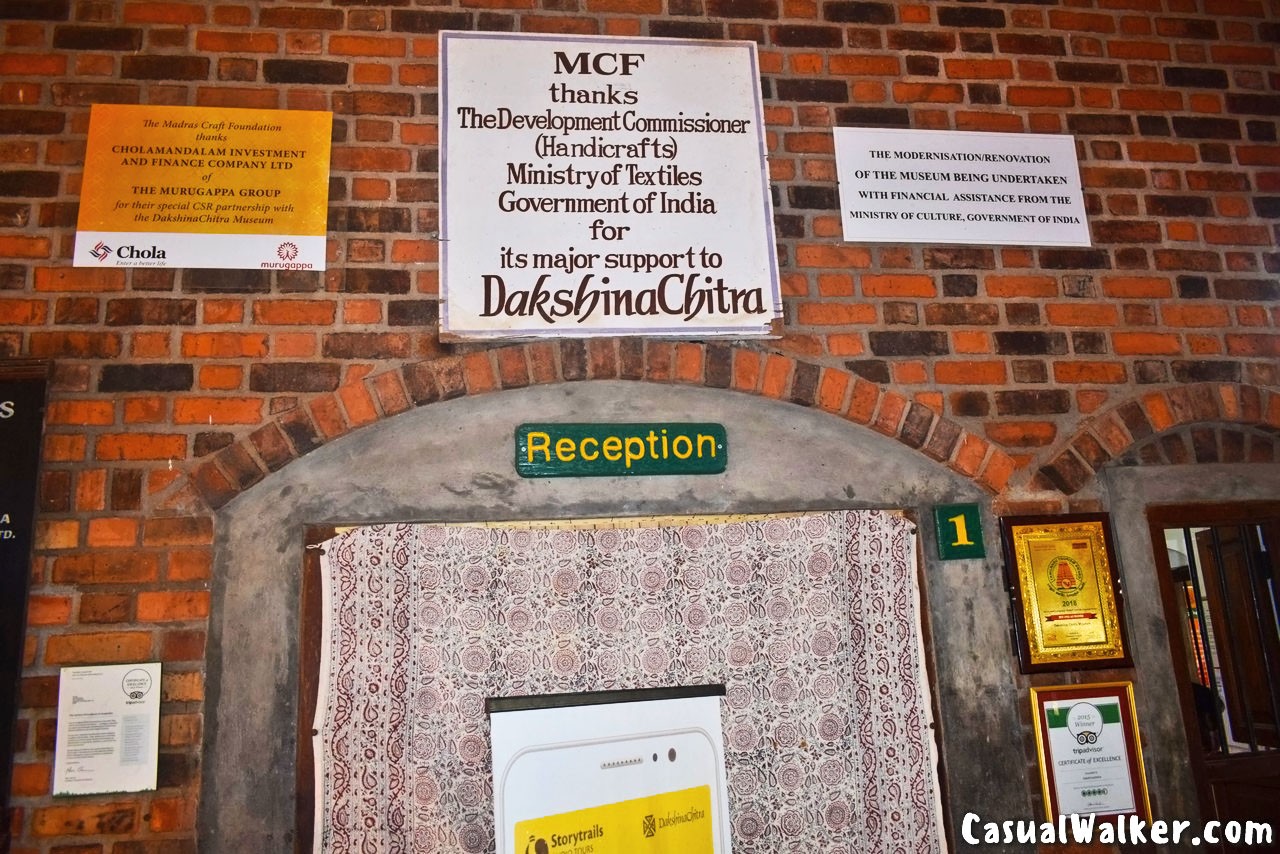



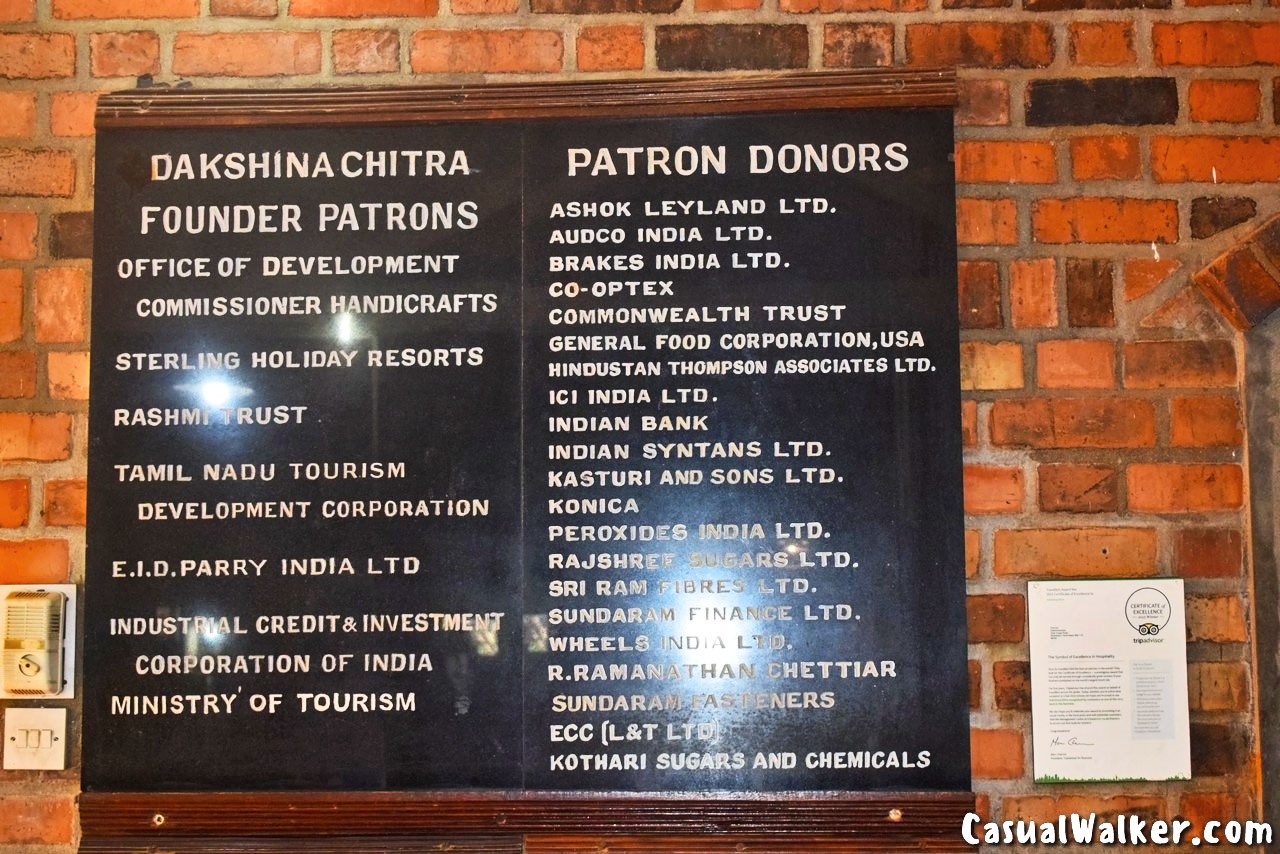



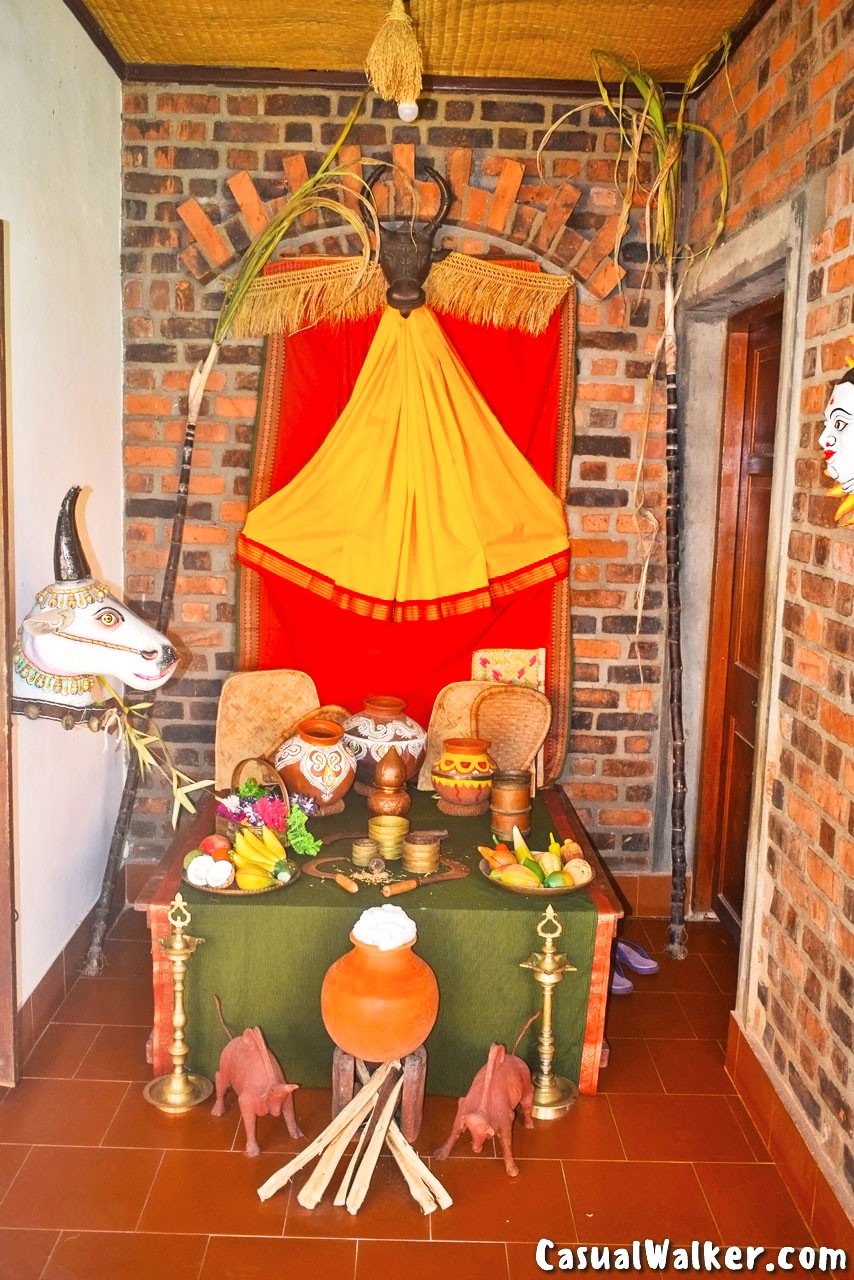
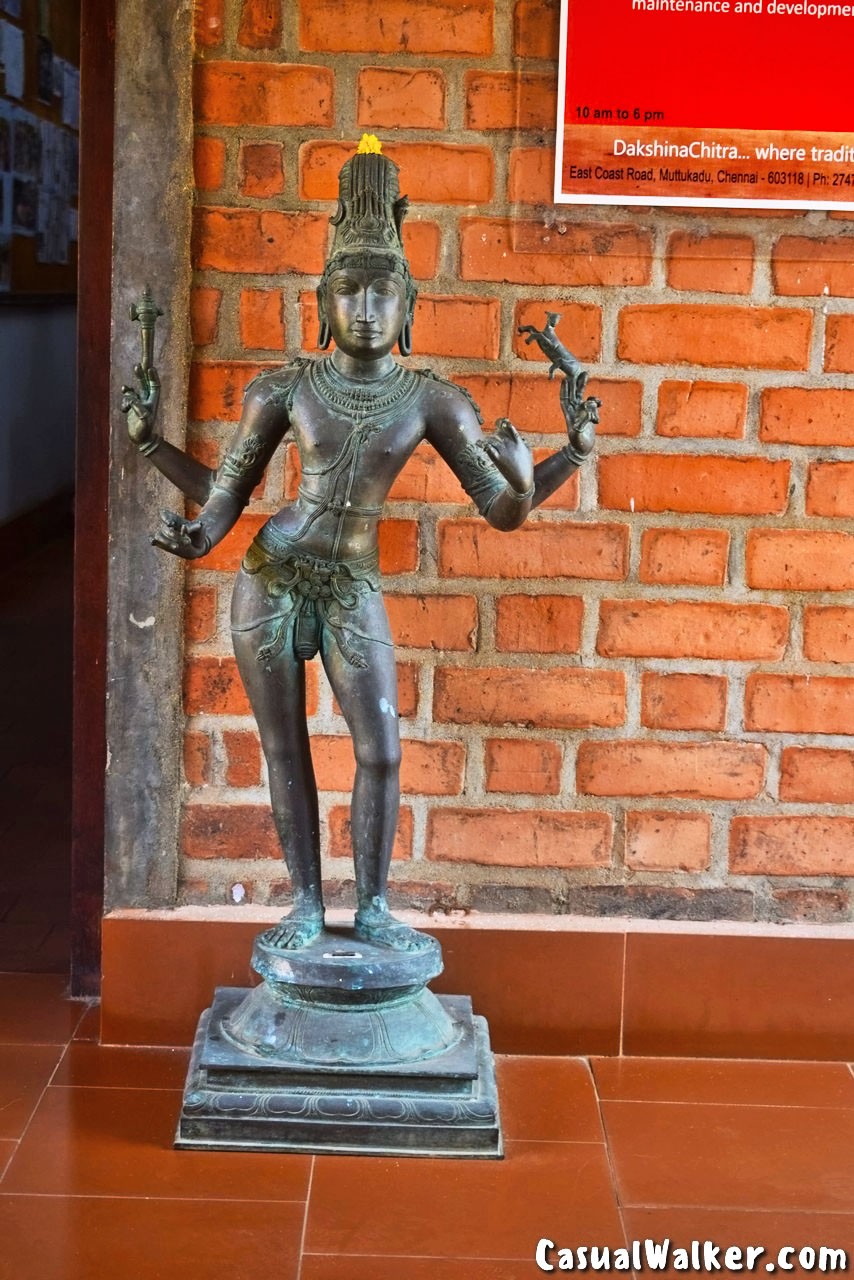












Cultural Events at DakshinaChitra
DakshinaChitra also organizes cultural events such as classical dances Bharatnatyam, Mohiniyatam, and Kuchipudi, Kavadiattam, famous Folk Dances like – Poikaal Kuthirai, Karagattam, Myilattam of Tamil Nadu as well as music concerts, at their open-air theatre or amphitheater.
These events are conducted on regular basis with proper date and time announcements on their website. We can also enjoy the traditional puppet show, potter’s wheel, traditional board games, Bioscope, Kili Joshiyam – Parrot Astrology, where the little parrot picks a card based on our name and the astrologer reads our fortune.















Tamil Nadu Heritage Houses:
The Tamil Nadu Heritage houses consist of seven traditional houses and three separate galleries, and one Lord Ayyanar temple. There were replicas of 6 varieties of Tamilnadu House like the Merchant house, Agriculturist house, Potter’s house, Basket weaver’s house, Bramhin House, Silk Weaver’s house.
Also, there were halls dedicated to art and textile exhibition. The Tamil Nadu section has the direct input and contribution of the Sri. Laurie Baker, the key architect of Dakshinachitra.
Key Features of Tamilnadu houses:
At the Tamilnadu houses, uses the lime plaster on the walls is a common feature of all Tamil houses, as the lime served as a bug repellent as well as a solar reflector, reducing the heat inside the house. The inside courtyard is another characteristic of Tamil homes. In the front of the home, there is also a raised verandah or seating space. The socializing took in this place called “Thinnai” in the Tamil language – the outside bench, which are most common once in all Tamilnadu Houses.
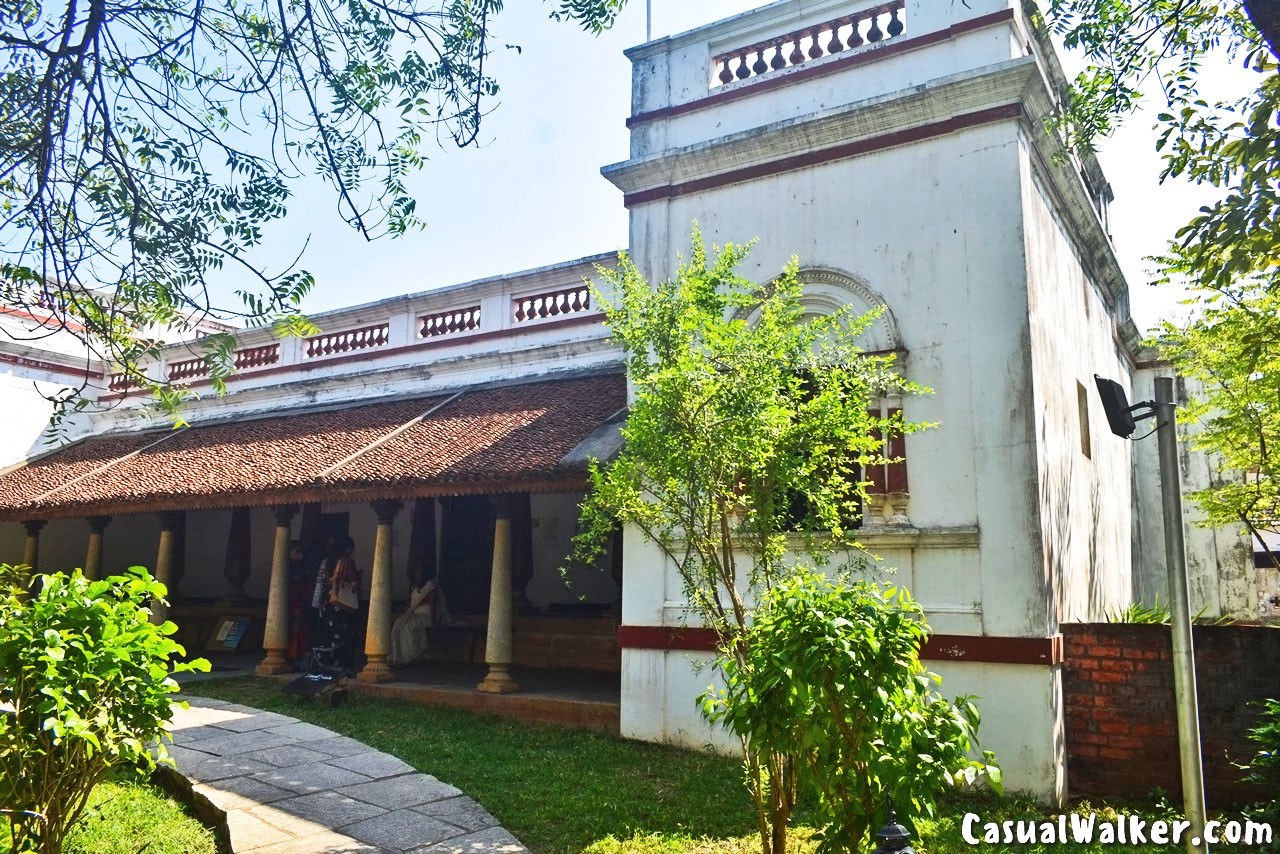

Tamil Nadu Merchant House – Chettinad, Pudukkottai District :
The Tamil Nadu Merchant House is the typical Chettiar House of South Tamil Nadu and also it serves as the primary attraction of Dhakshinachitra. The ancestral home here belongs to the Kandanur village of Ramanathapuram District.
This house represents the Chettinad residences of the Nattukottai Chettiars, a merchant society found distributed over in the present-day Tamil Nadu districts of Ramnad, Pudukottai, and Sivaganga. Chettiars, the Burma traders usually built their houses with Burma teaks which are withstanding for very long times. Dhakshinachitra Chettinad’s house is also inbuilt with these Burma teak pillars.
This house has a typical huge inner courtyard with thin stone pillars on all sides within the Chettinadu home. A succession of rooms is created around the inner courtyard for the purposes of sleeping, storing grains, and praying. Within the house’s interiors, we will be enchanted by the classic flavors of the Chettiar lifestyle.














Parts of this house have been transformed into a museum portrays the vernacular clear view beautifully about Tamil Sangam landscape:
Kurunji – Represents the mountainous regions.
Mullai – Represents the forest regions
Marutham – Represents the croplands
Neithal – Represents the seashore
Palai – Represents the desert
The landscapes – the Kurunji and Mullai are termed as Pallai during dry periods.

















Textile Exhibition Hall:
The Textile Exhibition Hall displays textiles of Tamil Nadu prevalent throughout the state, including regional saris, men’s wear, textiles of trade, and textiles of rituals.


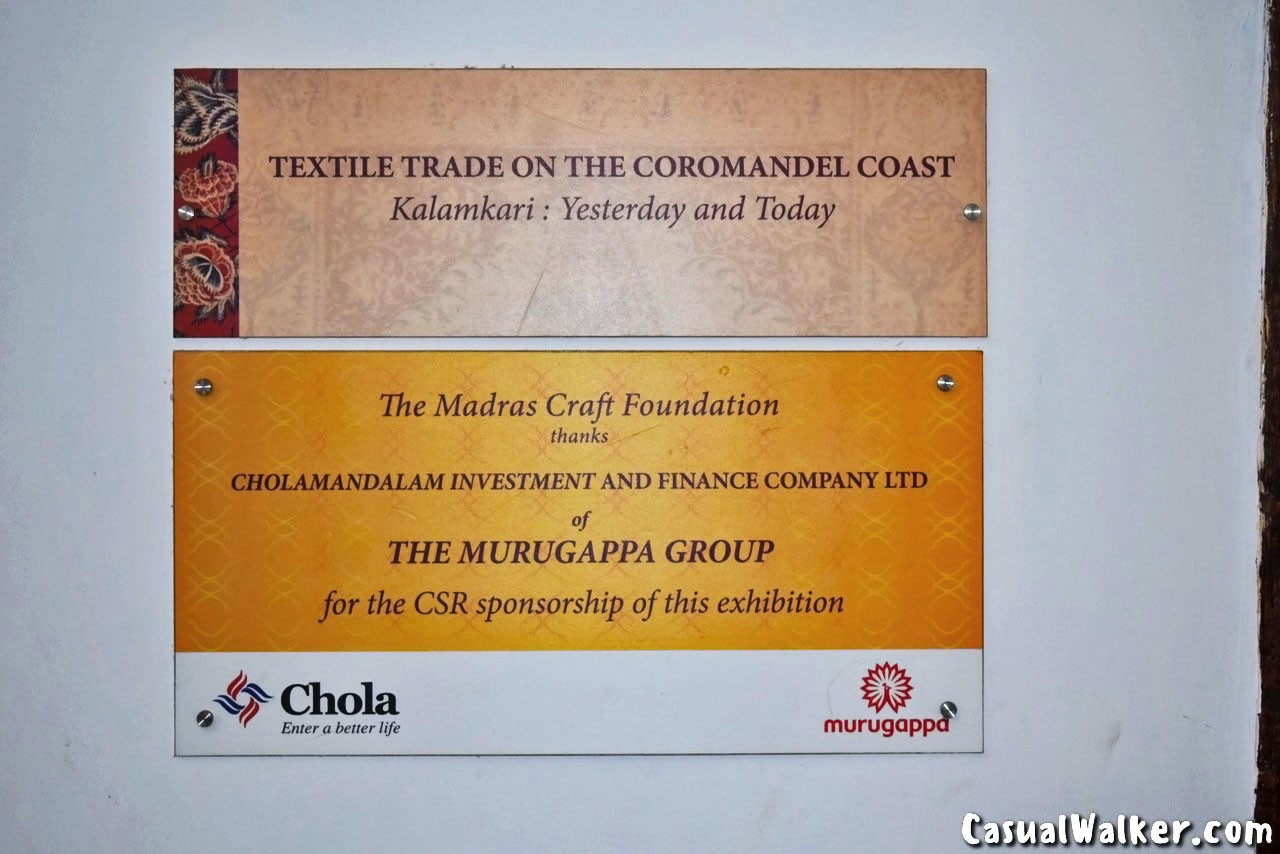







Agraharam Brahmin house – Ambur Tirunelveli District :
The Agraharam Brahmin house has been relocated from an agricultural village called Ambur Tirunelveli District. This Brahmin house has been relocated from Ambur village, an agricultural village of the Tirunelveli area in the South of Tamil Nadu. They are almost always joined by a shared wall and they are typically narrow and long in width and have open spaces in the back. They are a close-knit community since their houses are usually located on a single street.
The houses in Agraharam are two-storied are often without an interior courtyard and so sunlight and ventilation were obtained through the small windows. The upper floor was used for drying grains and storage. There is also an art gallery at this house.

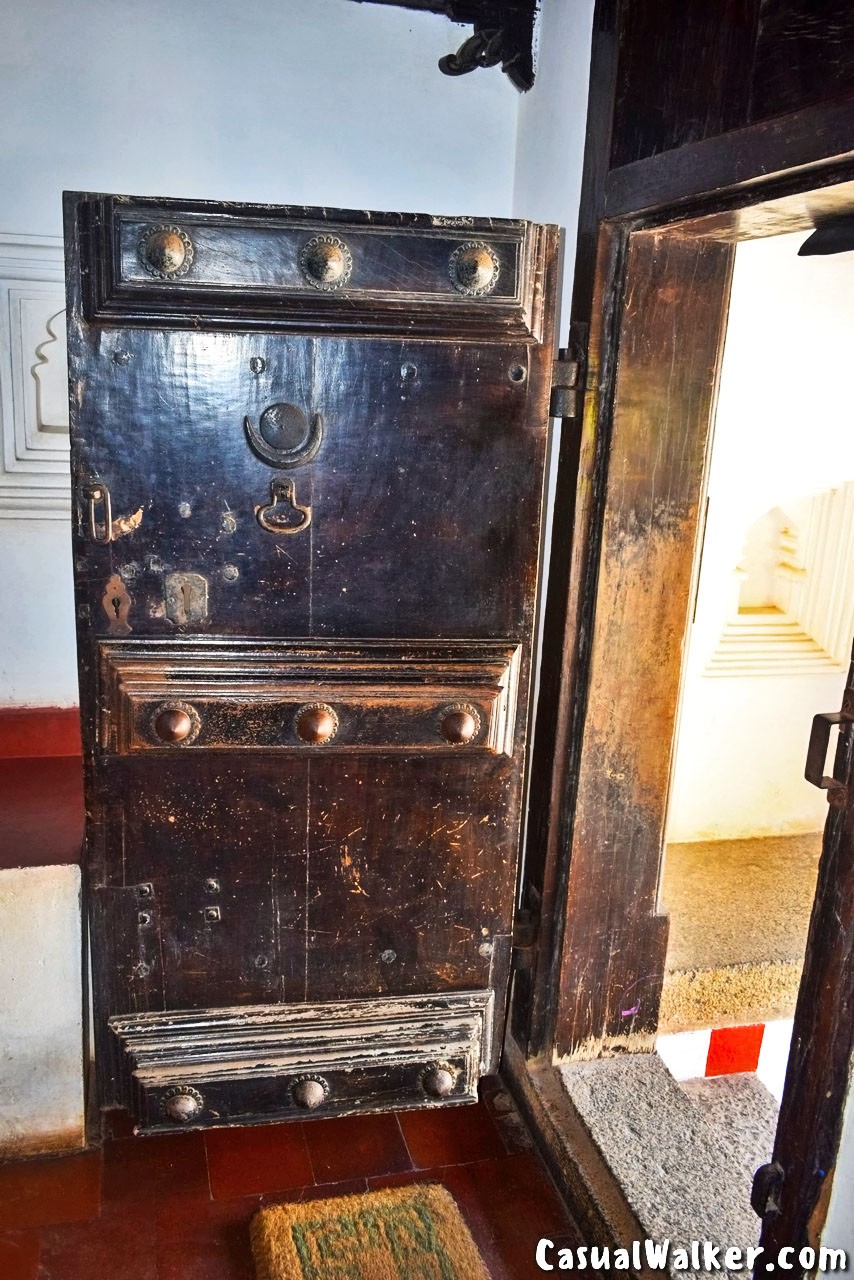









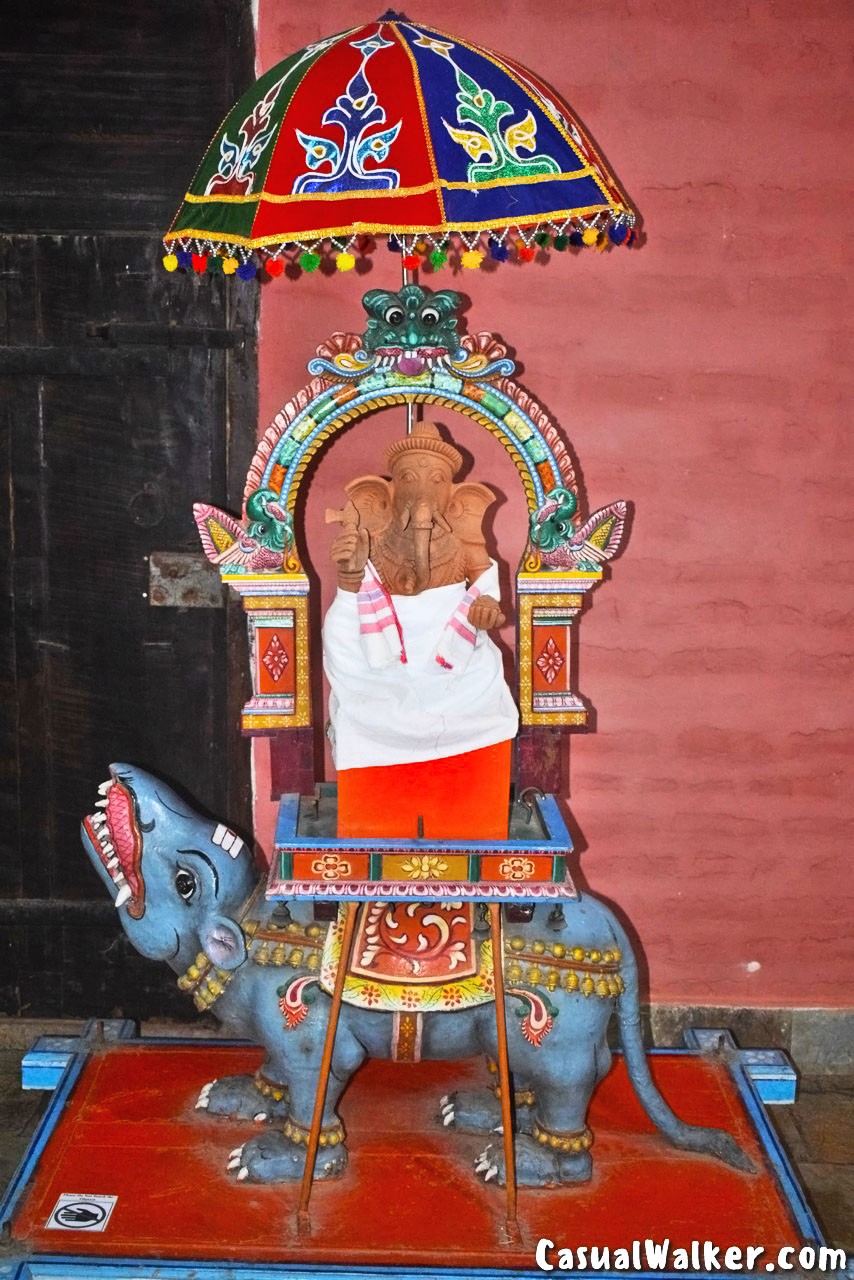


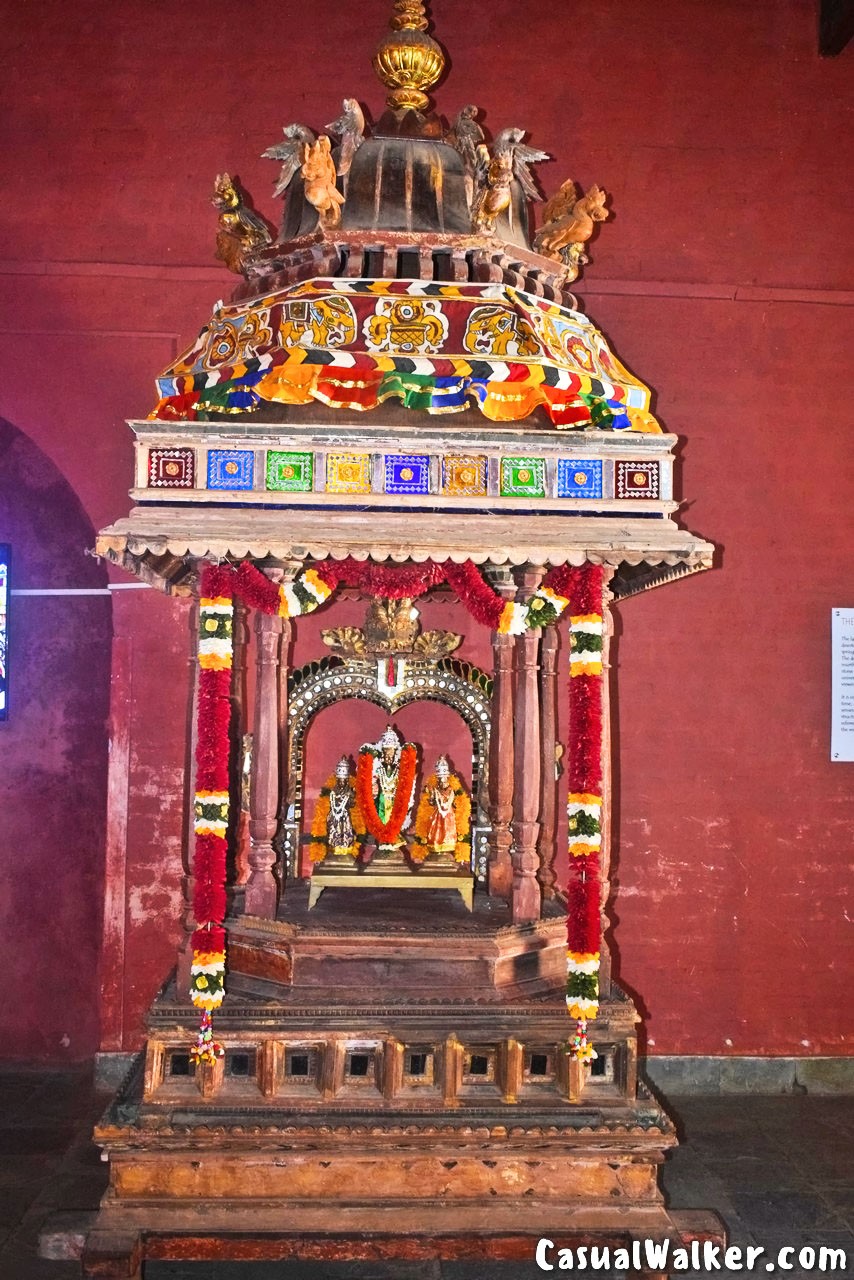

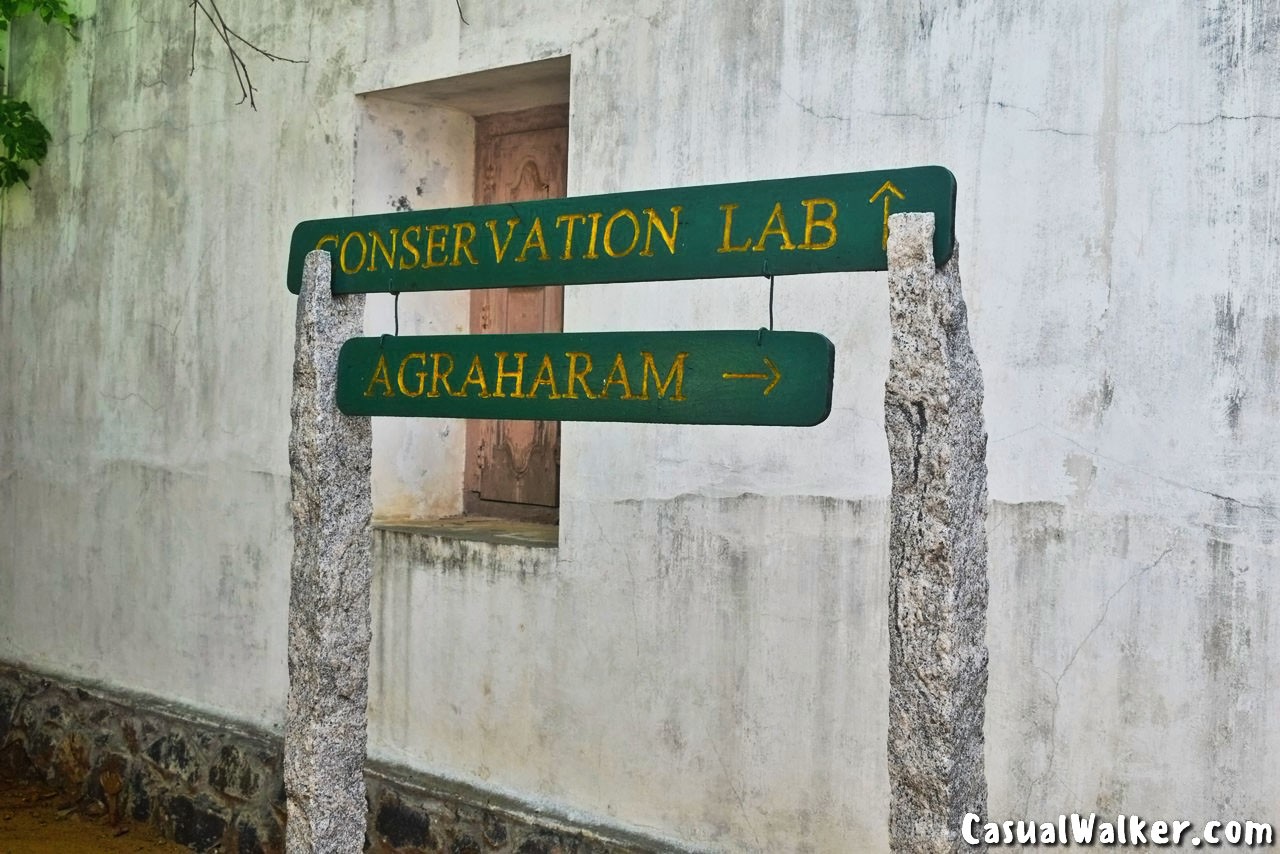


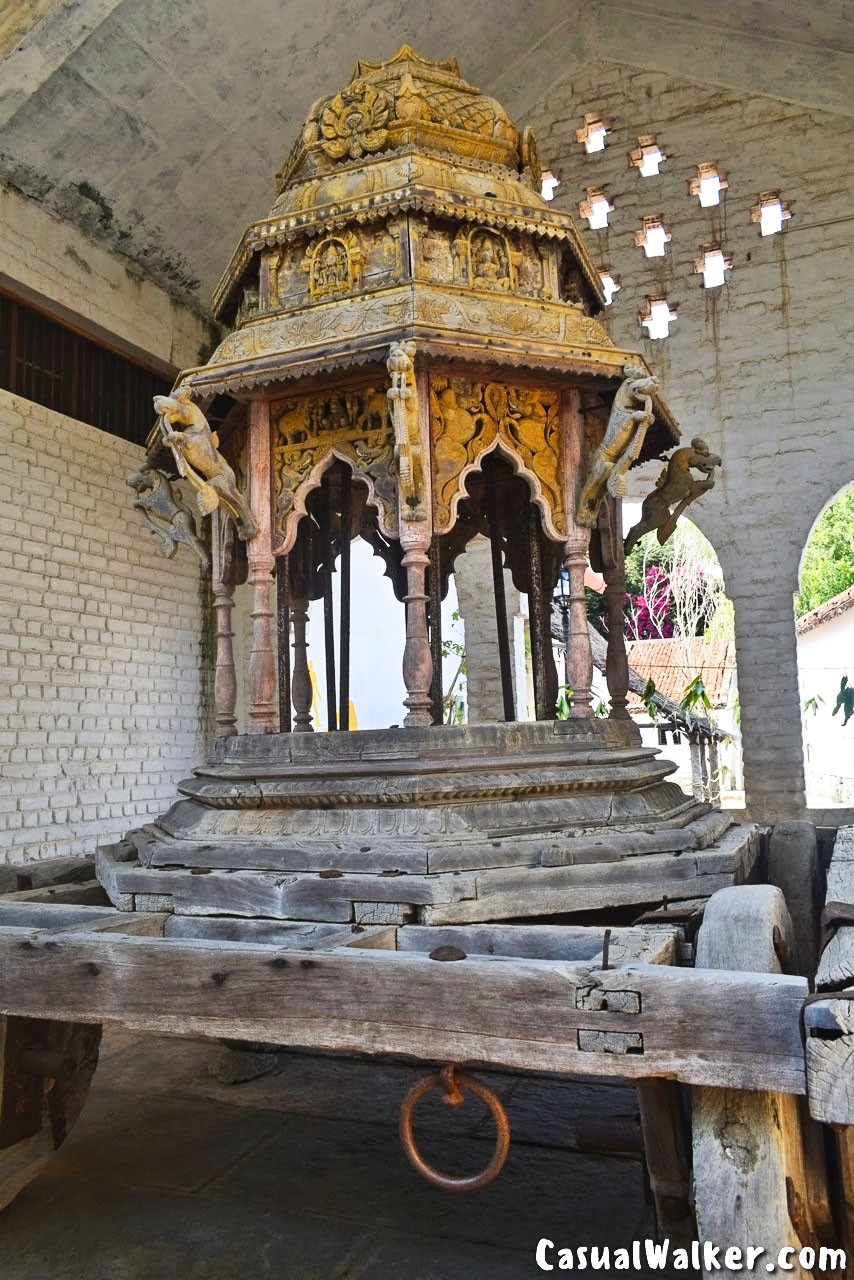
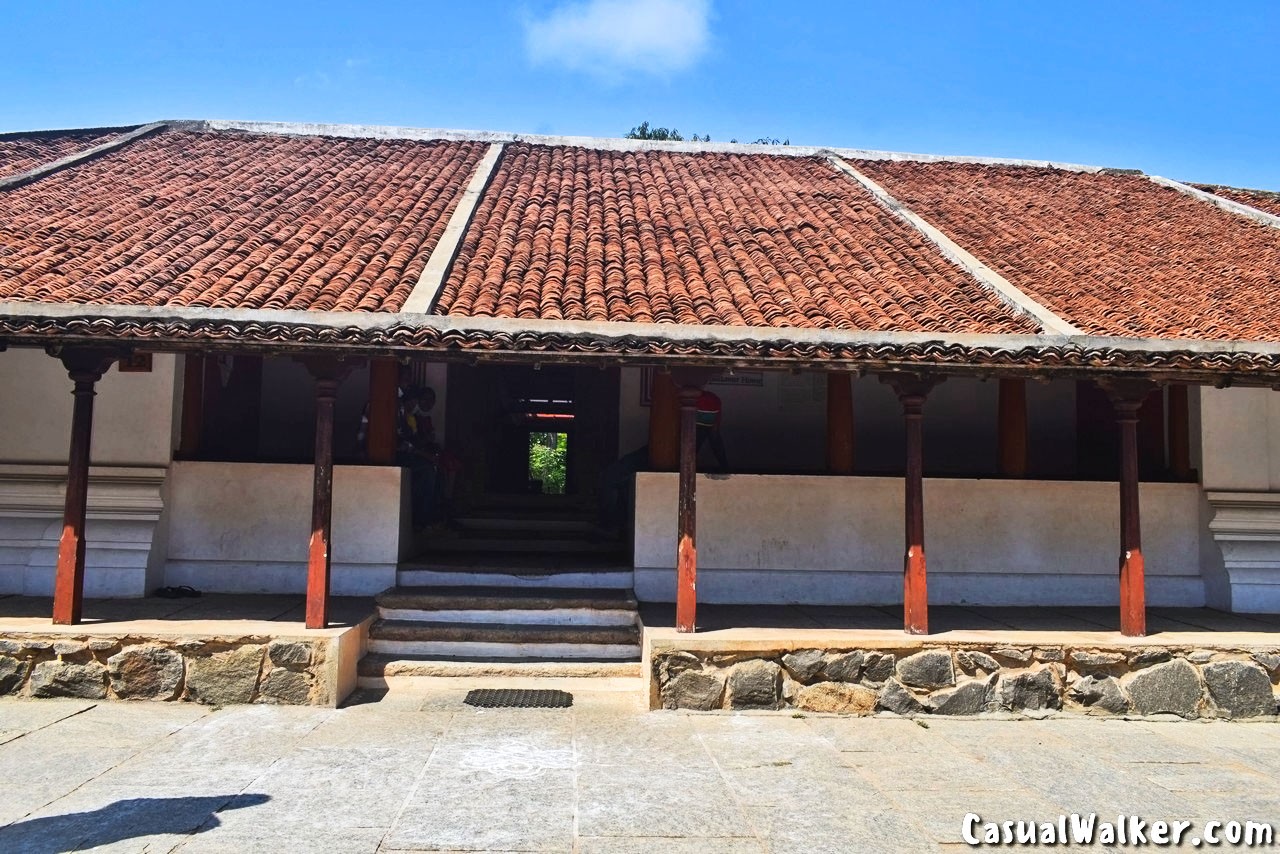


Agricultural house – Mayavarnam, Thanjavur district :
The Agriculturist house was reconstructed without any change except for its orientation. The exhibition inside the house shows the different crafts that are part of domestic living and the agricultural equipment used for paddy and for dry cropping.
Agriculturist’s house from Sattanur, Mayavarnam district of Tamil Nadu will let us have a peep into the agricultural surrounding of early timelines of Tamil Nadu. The house represents various houses in Mayavaram and Tanjavur districts in and around villages. The traditional household items of agriculturists are on display, which is most common in all Tamilnadu agriculturist houses.
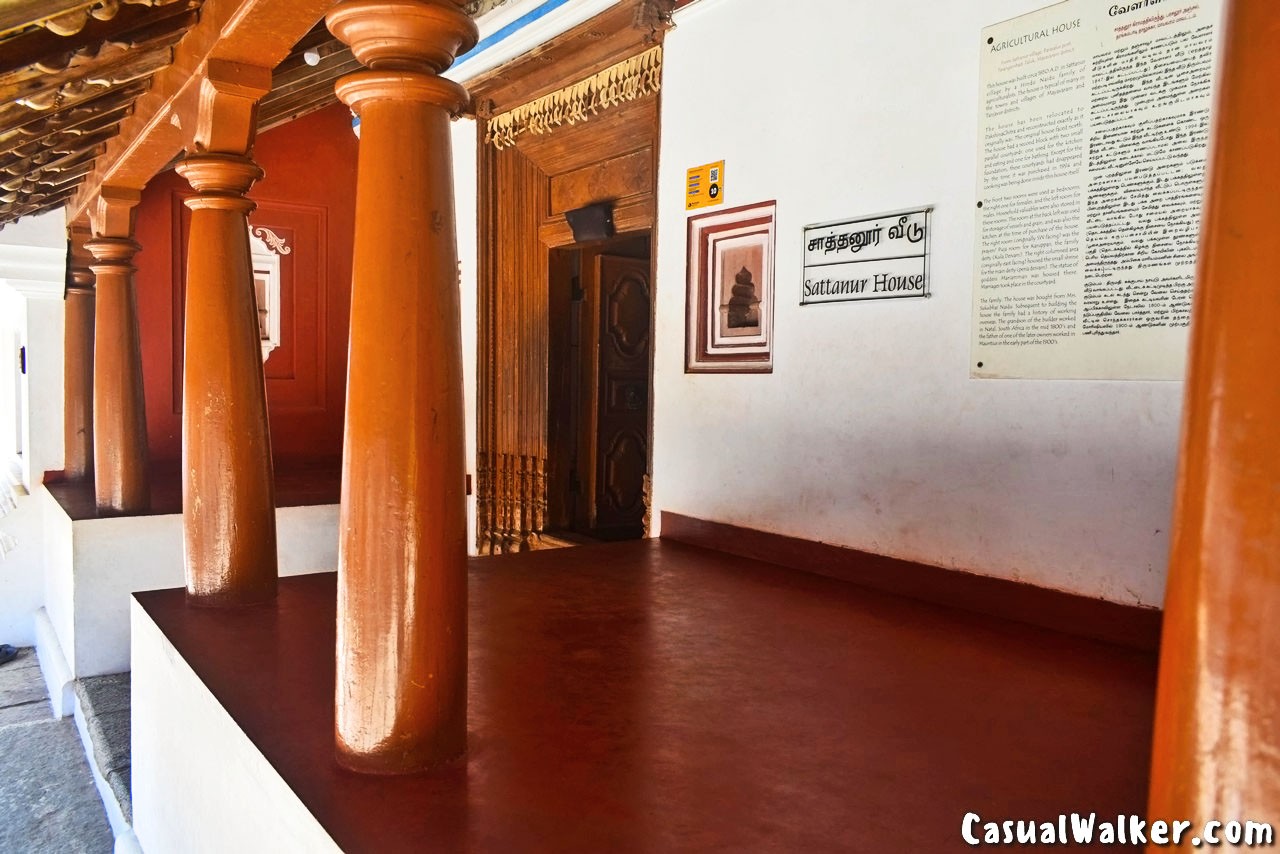
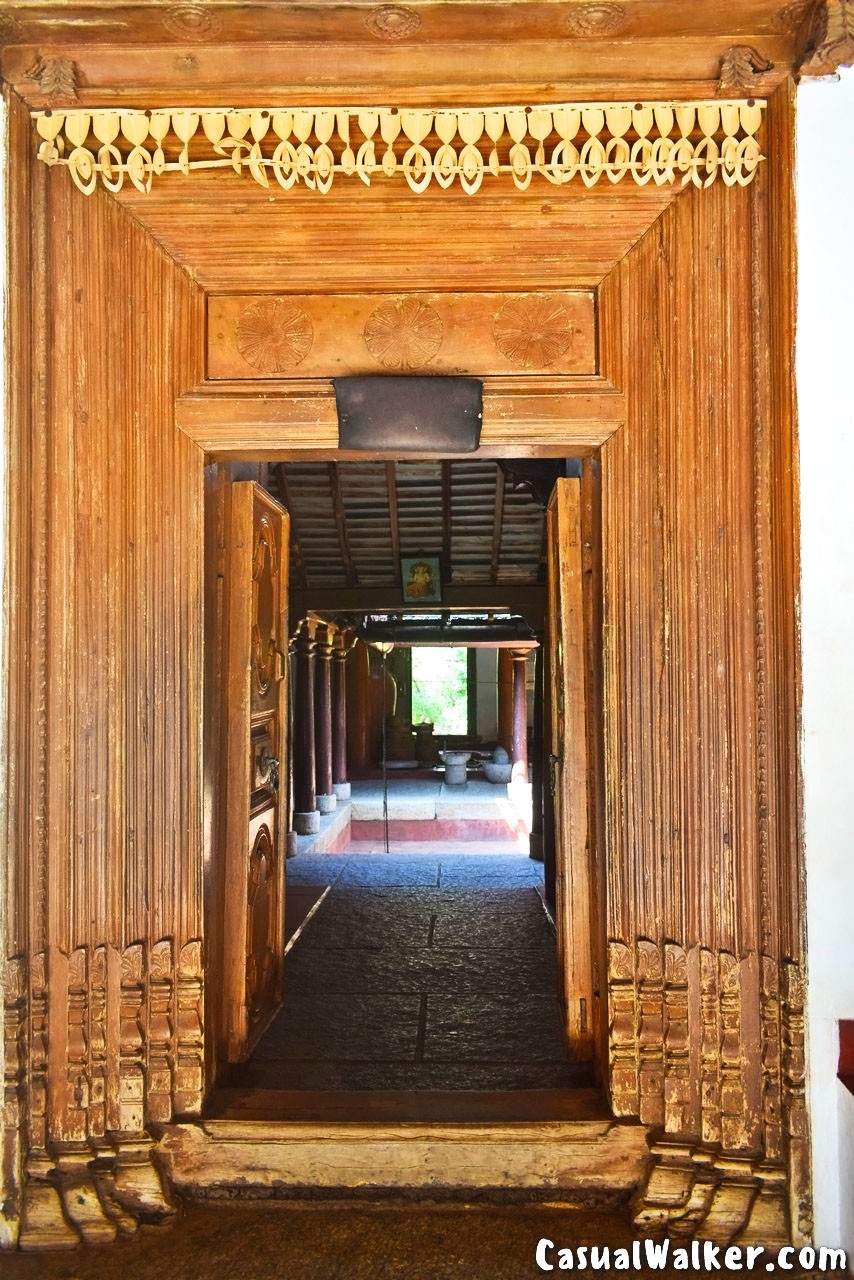










Activities at DakshinaChitra:
There are activities at DakshinaChitra for kids and craft lovers. Dhakshinachitra regularly conducts several activities and workshops related to Palm Leaf Crafts, Pottery, Pot Painting, Origami, Paper Crafts, Puppet Making, Fabric Printing, Glass Painting, Pebble painting, and Mehendi.
These activities allow children to directly engage in and create their own crafts and learn our traditional art and cultural forms. At the DakshinaChitra campus, one Artisan is assigned to each craft to exhibit or teach the attendees and we can take our makings with us once they are done. Apart from the primary admission cost, they charge a fee – starting at 20 rupees for each of these programs.


Events & Activities at DakshinaChitra:
These events are conducted on regular basis with proper date and time announcements on their website. We can also enjoy the traditional puppet show, potter’s wheel, traditional board games, Bioscope, Kili Joshiyam – Parrot Astrology, where the little parrot picks a card based on our name and the astrologer reads our fortune.



Potters house:
A potter’s house is comparable to an agriculturist’s house, in that potter’s house has inbuild areas for living and working spaces. The pottery items are in display for sale also. The making of pots is demonstrated in the potter’s residence, and school children are encouraged to join in the hands-on experience.






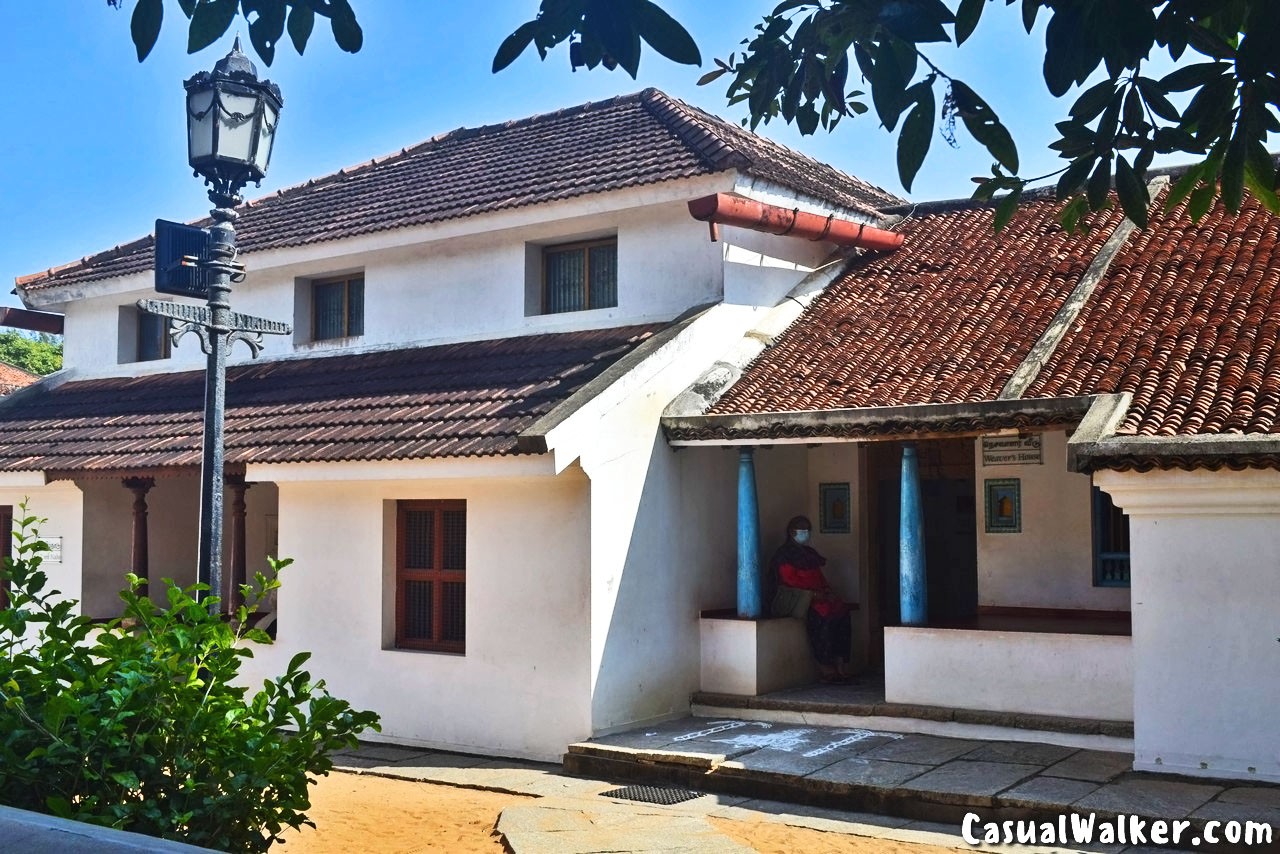

Basket weaver’s mud Houses – Chengalpattu district :
Two simple Basket weaver’s mud Houses of ordinary working-class people. The house has been made here with compressed mud blocks and the roof supports are from palmyra trees. These mud houses belong to the people of Tamil Nadu from Chengalpet district.
Don’t to forget have your hands on basket weaving. Both Pottery items and baskets are showcased for sale in their respective house.





Potter’s House – Chengalpattu district:
The Potter’s House represents two practicing Potter’s families. The potter’s house is comparable to an agriculturist’s house, in that potter’s house has inbuild areas for living and working spaces.
The pottery items are in display for sale also. The making of pots is demonstrated in the potter’s residence, and school children are encouraged to join in the hands-on experience.
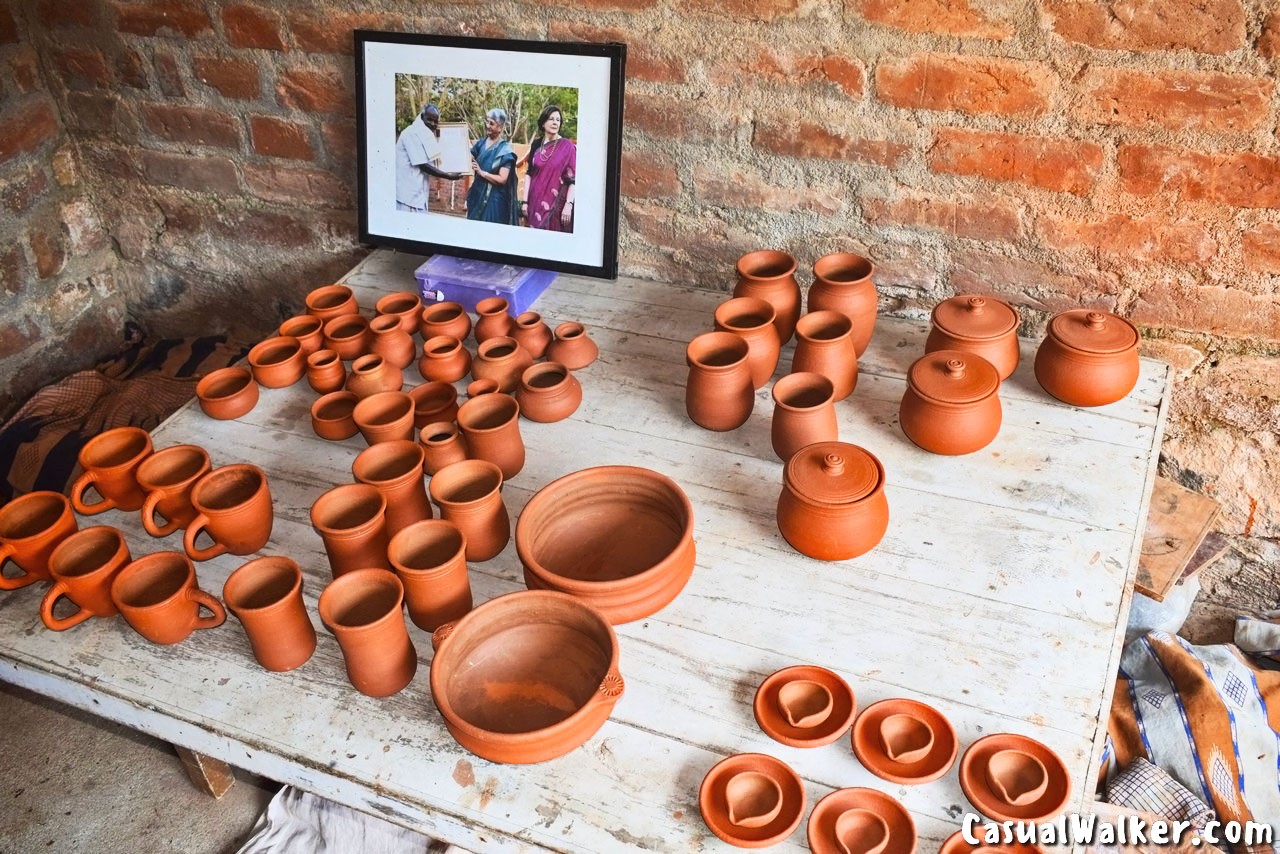


Village Lord Ayyanar Temple :
Lord Ayyanar is a distinctive guardian deity of various regions of Tamil Nadu from Pudukkottai district up to Chengalpattu district. The big statues of horses, elephants, and cows are Ayyanar’s vahanam – the vehicle. Lord Karuppasamy on the tiger is his lieutenant. Ayyanar temple festivals occur in the month of June and early July.

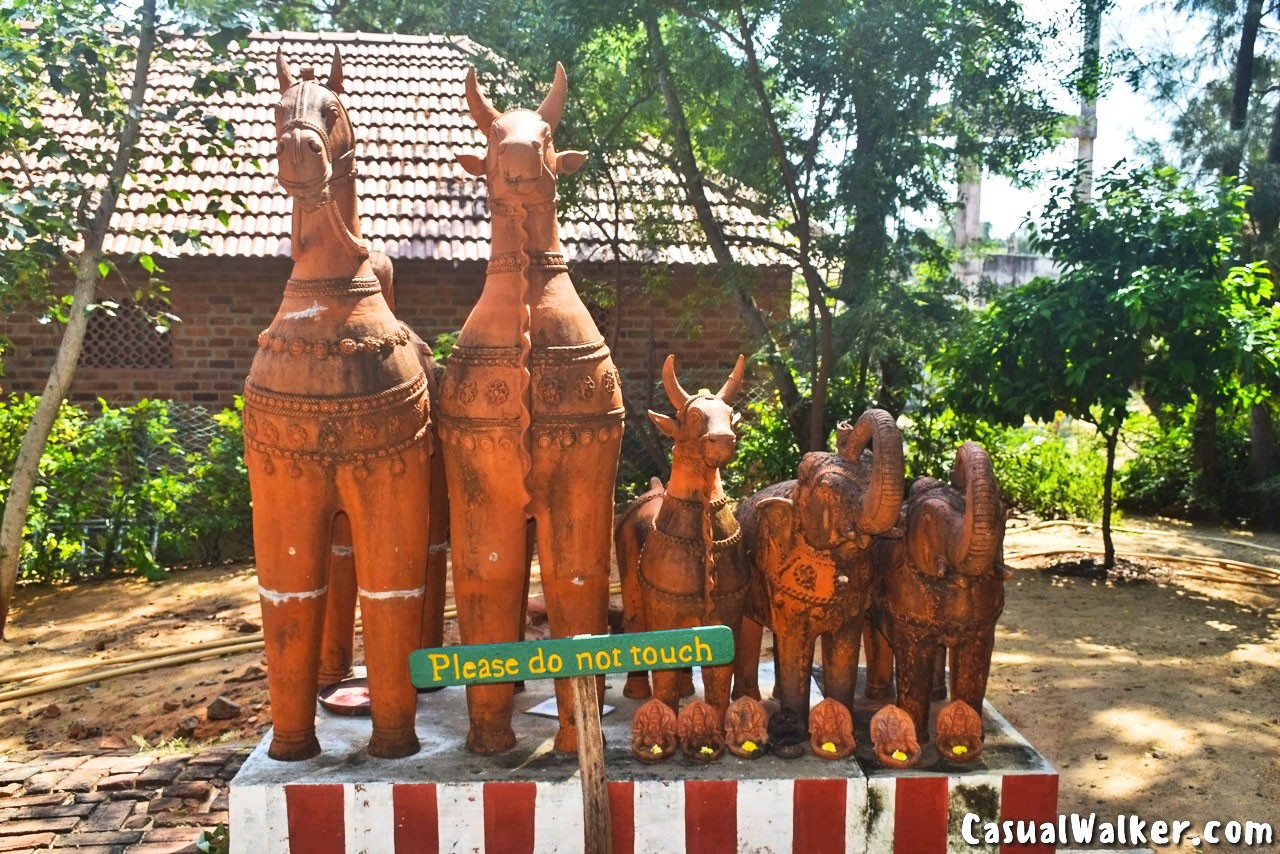
Silk Weavers House:
The silk weaver’s house in Dakshinachitra belonged to Kancheepuram district, a silk-producing town. Traditional craftsmen, such as weavers, do not keep their workshops apart from their homes.
Weaver’s house – Kanchipuram:
The Weaver’s house is an identical replica of a weaver’s house. The house has one functional pit-loom used for weaving Kanchipuram saris. A traditional weaver demonstrates this art. The reeling, twisting, and preparation of the weft tread were carried out in an internal courtyard. A working pit loom for weaving Kancheepuram saris may be found in this home. In the weaver’s house, a live demo of weaving the sari is done.





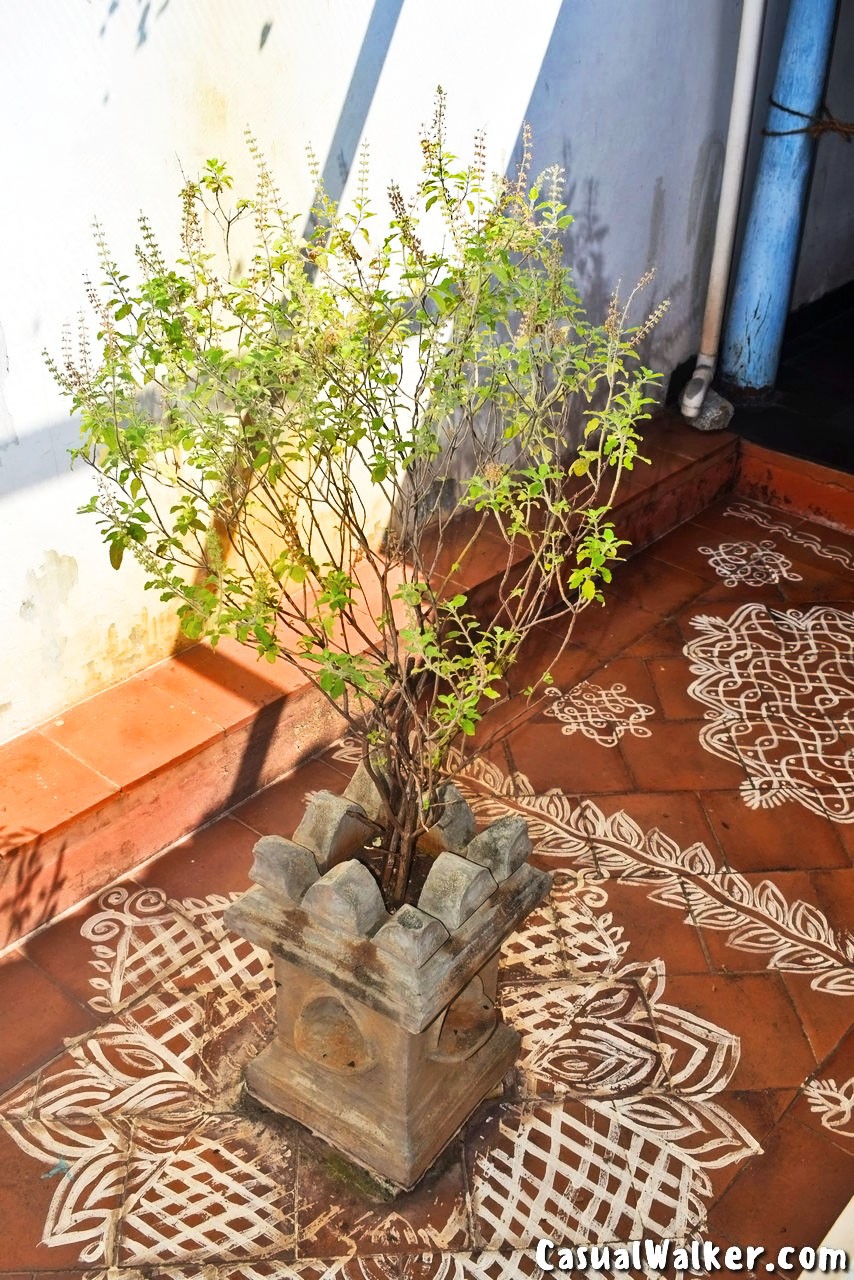

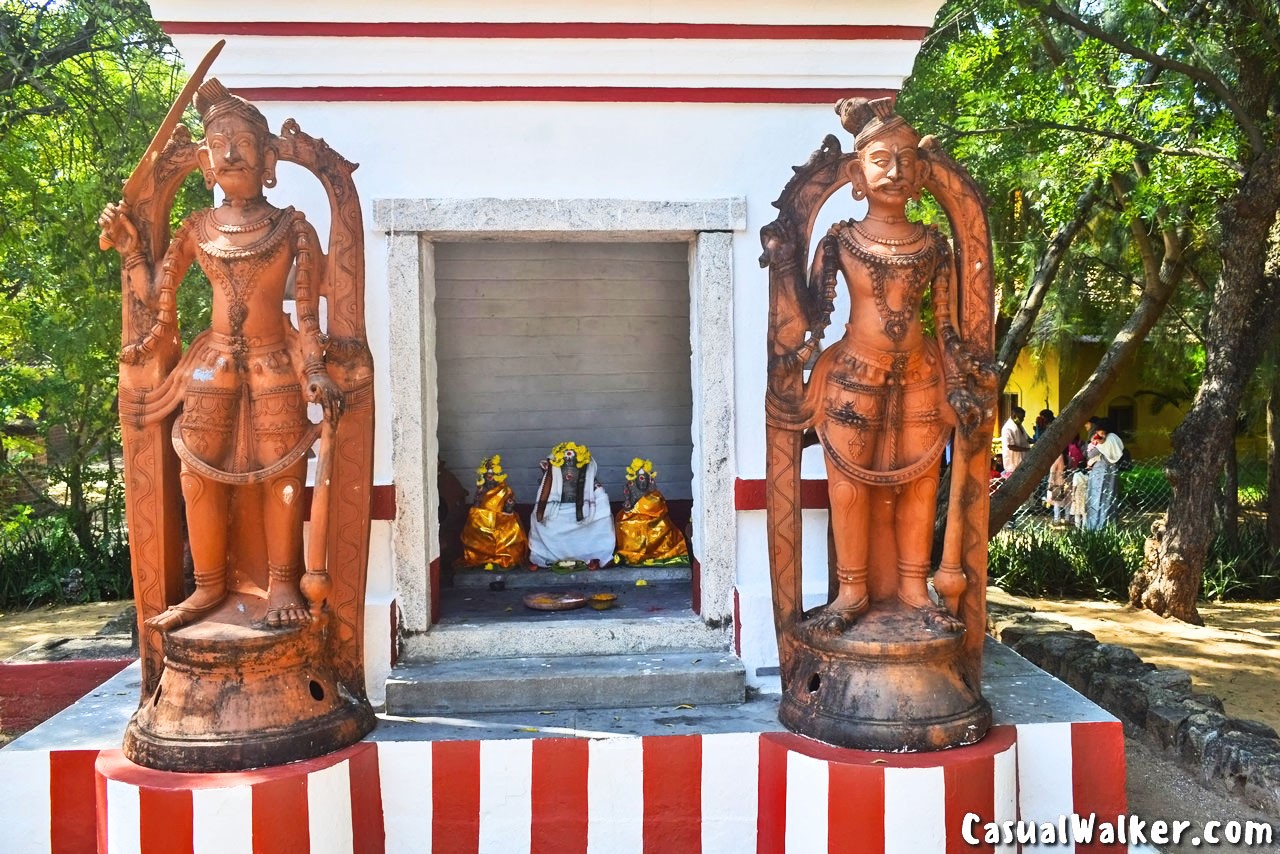
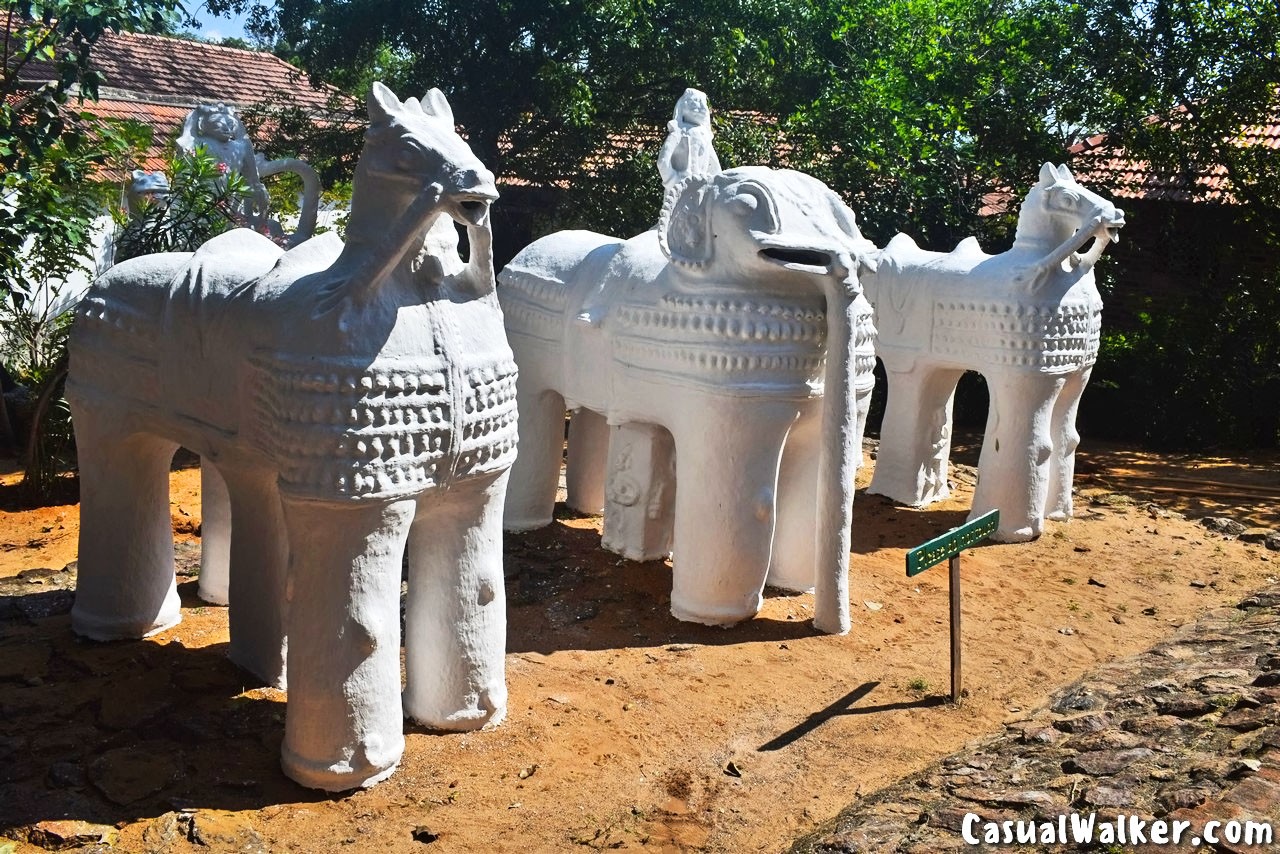

Karnataka Heritage Houses:
The Karnataka Heritage Houses represent the cluster of weavers houses from Ilkal, Bagalkote district of Northern Karnataka, and a Muslim house from Chikmagalur also has two elaborate houses representing two different geographical in Karnataka regions.
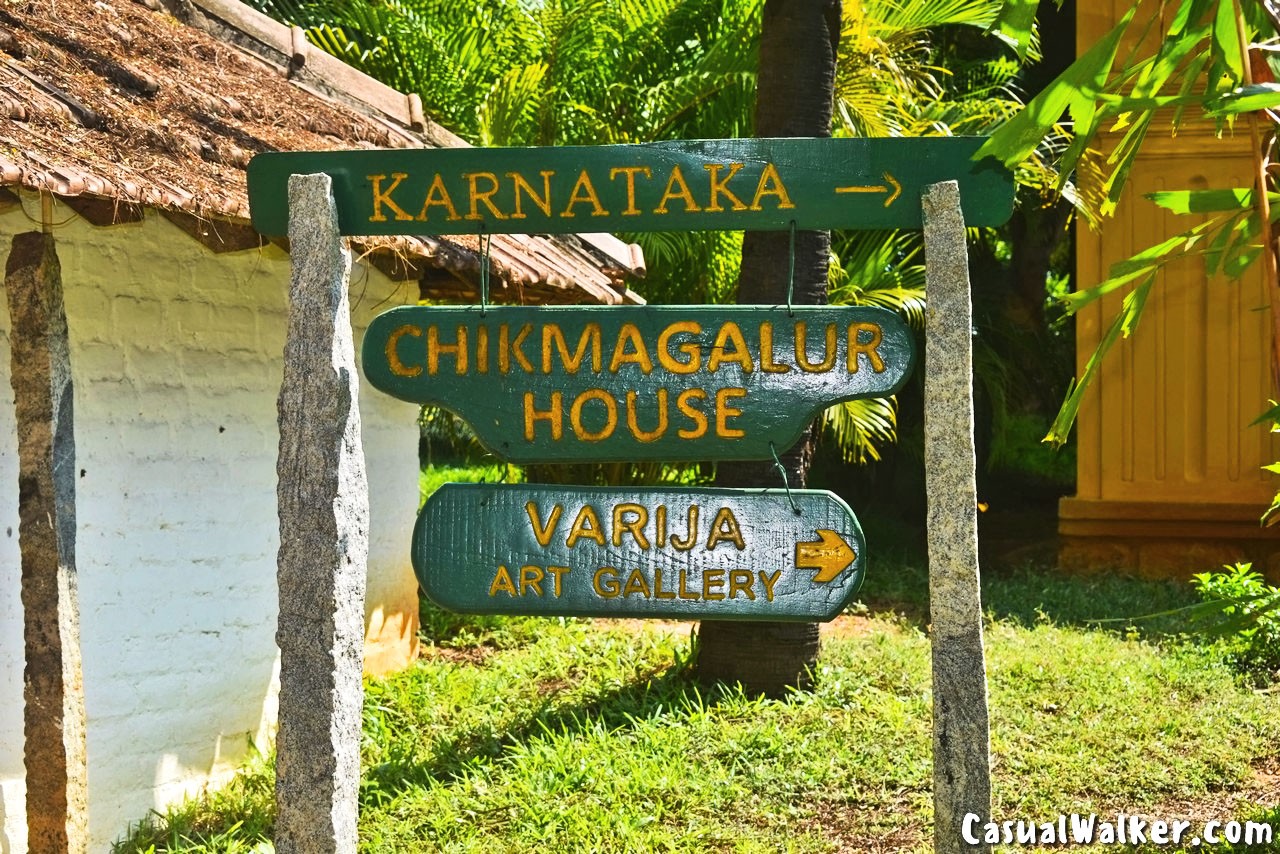
The Chikmagalur House – Muslim shopkeepers House :
The Chikmagalur House, a Muslim shopkeeper’s house originally constructed in 1914 displays the rich heritage and lifestyle South Indian Muslims community. The traditional and rich two-floor Muslim house is a part of the history of Karnataka’s Chikmagalur district, which was built using the abundant wood available in the Hills of Chikmagalur. In the front, it includes a robust wooden column and arches, as well as a richly adorned entrance door.
The interiors are lavish, with a fine porcelain collection, elegant furnishings, and lights. This Chikmagalur House showcases the unique traditions of the Muslim community in South India.

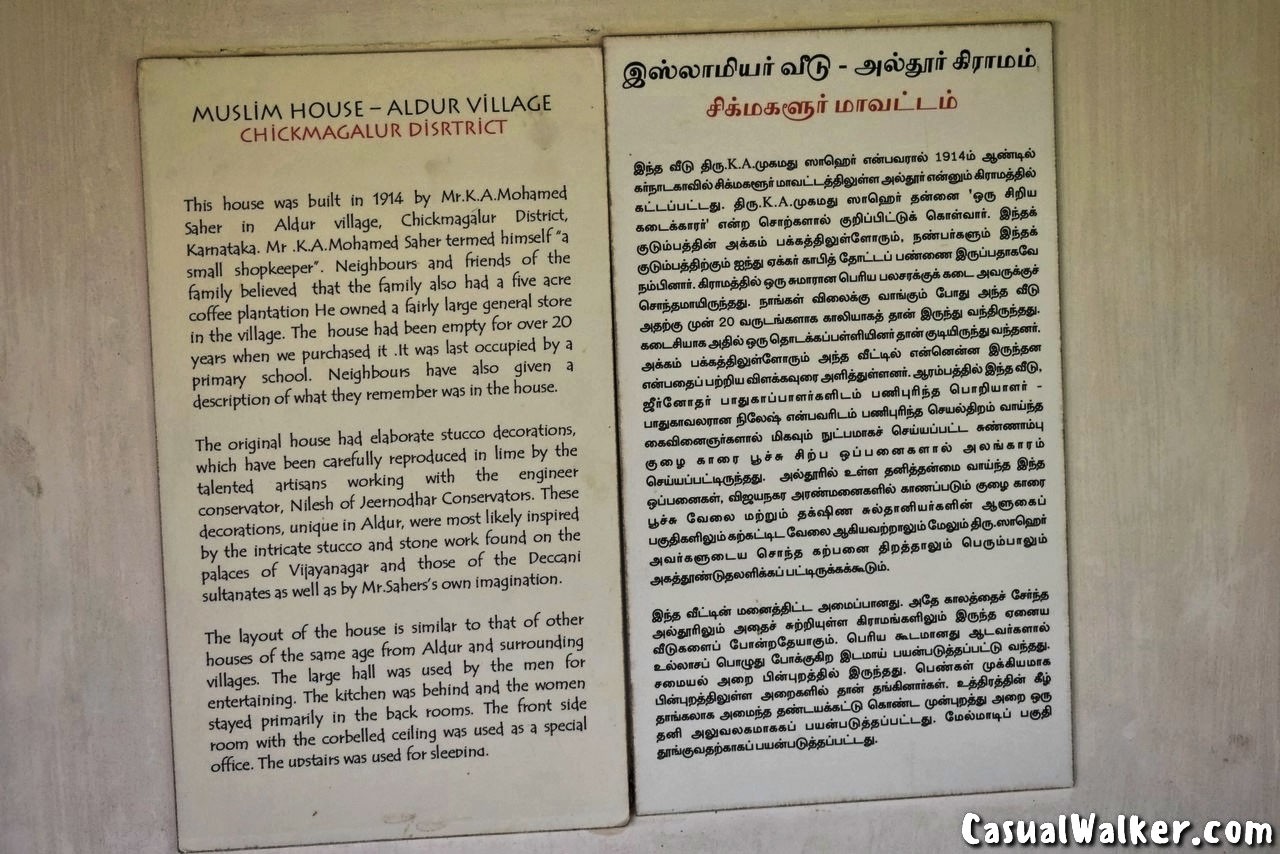





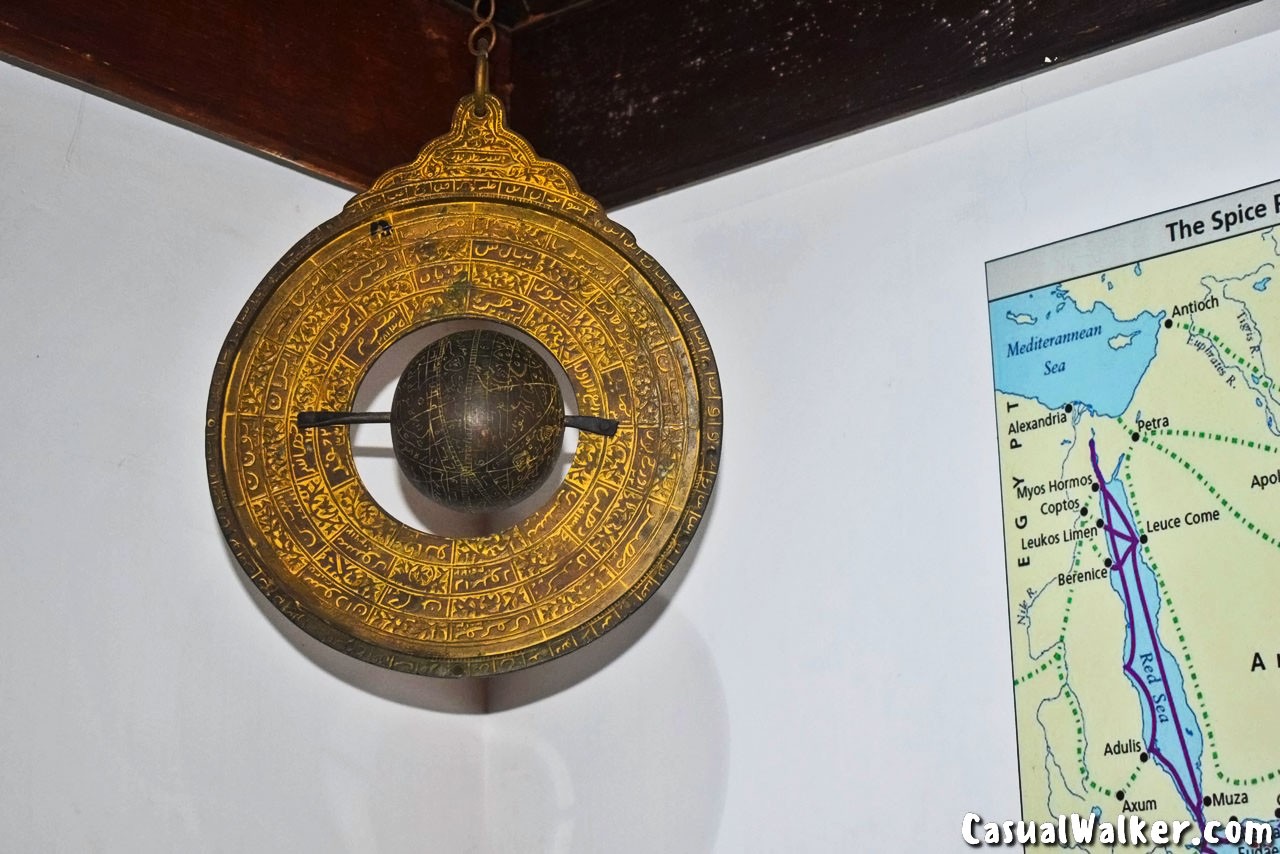



The Ilkal House – Bagalkota district :
The Weavers house, at the Ilkal, Bagalkot district in North Karnataka is of an urban settlement pattern. Almost all houses are built of stone, which is the most common building material in these areas. Ilkal sarees are famous in the region.
These houses are built traditionally with granite. These typical Ilkal weaver’s houses are made primarily of Stone. The wooden gateway, stone, and wooden window at the entrance were taken from Ilkal, which acts as an entrance to the Ilkal house cluster of the Bagalkot district. The house is almost covered with rock, even roof also stone here with small terracotta open pots for letting air and light in. Weavers settlement with courtyard shrine and neem tree for worshipping ancestors gods.

















Check the Dakshinachitra Heritage Museum in Muttukadu, Chennai (Part 2):
Also, Check Our Similar Arts & Culture based Indian Museum :
Madras Literary Society library, Chennai – One of the Oldest library in India – Visit, Travel Guide
Cholamandal Artists’ Village, Museum Of Contemporary Art, Injambakkam, Chennai
Asuras – Swarna Kolu / Golu, an Indian mythological Dolls & idols Exhibition at Thejus, Chennai

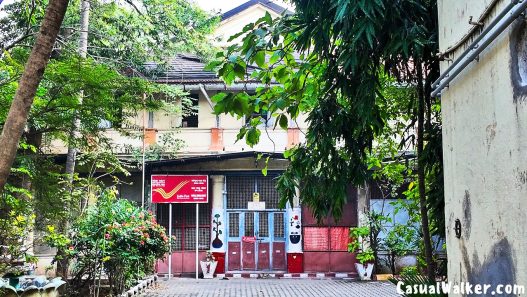


















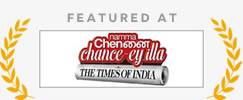








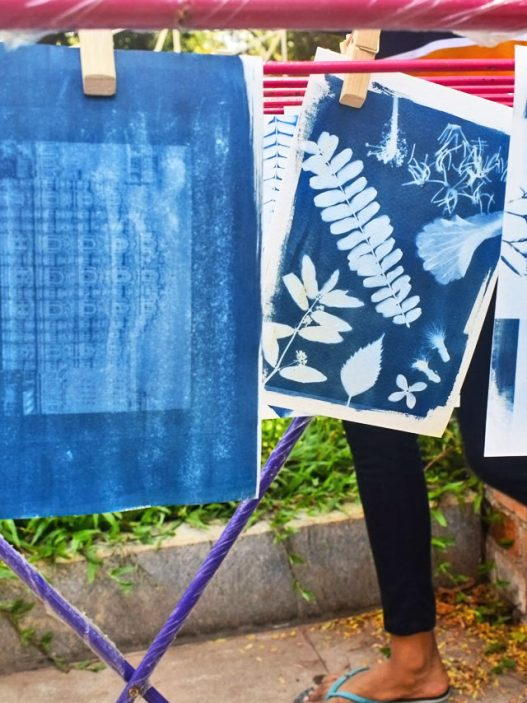


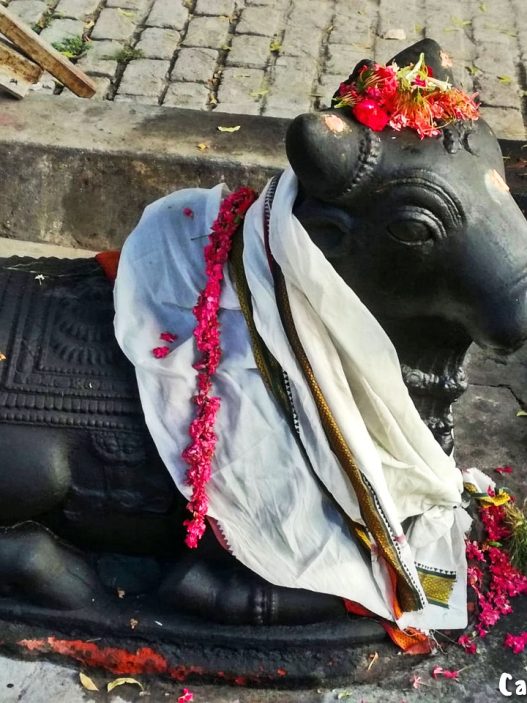
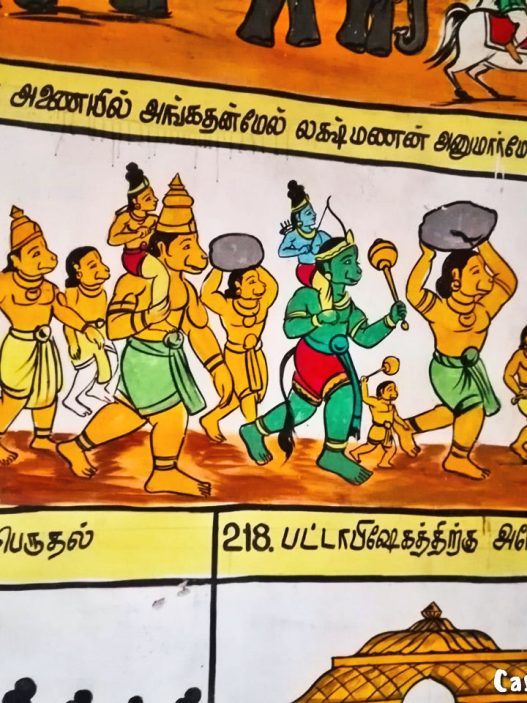
Hurrah, that’s what I was looking for, what a stuff!
existing here at this web site, thanks admin of this site.
Hello there! This is my first comment here so I just wanted to give a quick shout out and tell you I truly enjoy reading your blog posts. Can you suggest any other blogs/websites/forums that go over the same subjects? Thanks a lot!
Hmm is anyone else experiencing problems with the pictures on this blog loading? I’m trying to figure out if its a problem on my end or if it’s the blog. Any feedback would be greatly appreciated.
I like what you guys are up also. Such intelligent work and reporting! Keep up the excellent works guys I have incorporated you guys to my blogroll. I think it will improve the value of my website 🙂
Thank you for the sensible critique. Me & my neighbor were just preparing to do some research about this. We got a grab a book from our local library but I think I learned more clear from this post. I am very glad to see such magnificent information being shared freely out there.
Some truly wonderful content on this internet site, thankyou for contribution.
I got what you intend, thankyou for posting.Woh I am thankful to find this website through google. “Being intelligent is not a felony, but most societies evaluate it as at least a misdemeanor.” by Lazarus Long.
I love your blog.. very nice colors & theme. Did you create this website yourself? Plz reply back as I’m looking to create my own blog and would like to know wheere u got this from. thanks
Throughout the awesome pattern of things you receive a B+ just for effort. Exactly where you actually confused everybody ended up being on your particulars. You know, they say, details make or break the argument.. And it could not be more accurate in this article. Having said that, allow me tell you just what did give good results. Your authoring can be rather convincing and that is probably the reason why I am taking an effort to comment. I do not really make it a regular habit of doing that. 2nd, while I can certainly see a jumps in logic you come up with, I am not necessarily sure of exactly how you appear to unite your ideas which in turn make the actual final result. For right now I will yield to your issue however wish in the foreseeable future you actually link your facts better.
I like this web site so much, bookmarked.
I am continuously searching online for posts that can aid me. Thanks!
What i don’t realize is in fact how you’re now not really a lot more well-liked than you may be now. You’re very intelligent. You recognize therefore considerably with regards to this topic, made me for my part imagine it from a lot of varied angles. Its like men and women don’t seem to be involved unless it’s something to accomplish with Lady gaga! Your personal stuffs great. At all times care for it up!
Well I sincerely liked studying it. This subject procured by you is very effective for good planning.
https://t.me/s/Martin_casino_officials
Youre so cool! I dont suppose Ive learn anything like this before. So nice to find any person with some unique ideas on this subject. realy thanks for beginning this up. this web site is one thing that is wanted on the web, someone with just a little originality. helpful job for bringing one thing new to the web!
Nehmen Sie an Glücksspielen mit einem 250% Willkommenspaket bis zu €3000 + 1000 FS teil Fangen Sie an zu spielen mit einem exklusiven Willkommenspaket bis
zu €3550 + 175 FS Mit den richtigen Tipps und Strategien können Spieler ihre Chancen maximieren und verantwortungsvoll spielen. Spieler
sollten nicht mehr als 10% ihres Gesamtbudgets pro Spielrunde
riskieren, um verantwortungsbewusst spielen zu können. Der
FAQ-Bereich bietet umfassende Antworten zur Umwandlung von Bonusgeld und Auszahlung von Guthaben.
Dabei sind die Spielbedingungen die gleichen wie im
Echtgeldmodus, aber du spielst ohne Echtgeld, und auch die Gewinne sind nur virtuell.
Nach der Registrierung kannst du Klassiker und Spielautomaten mit Spielgeld auszuprobieren. Dieser bietet sogar eine „Best Bonus Garantie“, wie
zum Beispiel beim Wildz Casino Bonus.
Nach und nach wird also in deutschen Online Casinos PayPal wieder eingeführt.
In unserem Bestreben, dir den seriösesten und umfassendsten Test für Online Casinos anzubieten, haben wir ein besonderes Augenmerk
auf die Ein- und Auszahlungsmethoden gelegt.
Das Bwin Casino überzeugt in unserem Bonus Vergleich nicht
nur mit einem Willkommensbonus von 100% Gratis Guthaben bis zu 300 € sowie mit 200 Free Spins am beliebten Legacy of
Dead Slot. Spiele mit dem RTP sind Slots und Tischspiele; dabei variiert die Quote
zwischen 95% und 97%. In der Regel wird der Willkommensbonus nach der Anmeldung oder nach der ersten Einzahlung ihrem Konto gutgeschrieben. Nebenbei haben wir
eine Rangliste der besten deutschen Online Casinos für Sie zusammengestellt.
Beachten Sie dabei, dass vor Ihrer ersten Auszahlung
und auch oft vor dem Anfordern von Willkommensbonus Ihre persönlichen Daten und eventuell Ihre Bankdetails überprüft werden müssen.
I really appreciate this post. I¦ve been looking everywhere for this! Thank goodness I found it on Bing. You have made my day! Thx again
Youre so cool! I dont suppose Ive read something like this before. So nice to find anyone with some authentic thoughts on this subject. realy thank you for starting this up. this web site is something that is wanted on the web, somebody with just a little originality. useful job for bringing one thing new to the internet!
Real fantastic info can be found on weblog.
Hey there, You’ve done a fantastic job. I’ll certainly digg it and in my view suggest to my friends. I’m confident they will be benefited from this web site.
The site offers more than 300 genuine money-based pokies
as well as casino games offered by well-known operators.
The focus is clearly on rapid access and gameplay—without sacrificing basic
safety. For me, that was okay—I was there for the
slot experience—but if you’re a live-lover, Ripper
may disappoint. Ripper also supports credit cards, Neteller, Neosurf,
MiFinity, and cryptocurrency. Large selection of
different games and payment methods
Bitcoin is the fastest, with withdrawals often processed instantly,
making it an ideal choice for players who want quick access to their
winnings. Additionally, the casino only partners with reputable game providers that use certified random number generators (RNGs),
ensuring a fair and trustworthy gaming experience.
You can register, deposit, claim bonuses, and withdraw winnings just as easily as
on desktop. Full deposit and withdrawal support
References:
https://blackcoin.co/wazamba-premium-pokies-paradise-for-australian-players-in-2025/
After logging in, click the “Cashier” button and
navigate to the “Coupons” tab to redeem bonuses instantly.
It’s fair dinkum the best welcome offer you’ll find on the
Australian online gaming market. Our Ozwin welcome bonus consists of a massive 400%
match bonus plus 100 free spins on selected pokies.
It’s essentially a free pass to explore the casino’s vast selection of games and potentially win real money, making it a popular choice for both newcomers and seasoned players.
The welcome offer featuring a 200% bonus up to $2000 plus 50 free spins works identically across all devices, allowing new players to
maximize their initial deposits regardless of how they access the platform.
The mobile platform maintains full access to games, banking options, and account management tools without requiring downloads or updates.
Weekly free spins promotions offer 50 spins on featured slot games for players who deposit $50 or more during the promotional period.
New players receive a 200% match bonus up to $2,000 on their first deposit
plus 100 free spins on selected slot games. By earning comp points from real
money wagers, players can progress through levels from “Tourist” to
“Absolute Legend,” with increased cashback percentages and access to
daily promotions, prioritized support, and
exclusive perks.
Additionally, the casino provides tools for responsible gaming,
allowing players to set limits on their deposits and gaming sessions.
The casino ensures seamless navigation, whether you’re playing on desktop or mobile,
making it accessible for players at home or on the go.
Our combination of generous bonuses, premium games, and authentic Aussie
service creates an experience that’s both exciting and secure.
References:
https://blackcoin.co/playzilla-your-ultimate-pokies-destination-in-2025/
Thank you for the good writeup. It in fact was a amusement account it. Look advanced to more added agreeable from you! By the way, how can we communicate?
Great write-up, I’m normal visitor of one’s blog, maintain up the nice operate, and It is going to be a regular visitor for a long time.
online american casinos that accept paypal
References:
tiroljobs24.at
mobile casino paypal
References:
https://getjobs.company/
I wanted to write you this little note to finally say thanks once again for these pretty solutions you’ve provided above. It was certainly seriously open-handed with people like you to offer extensively all that many people could possibly have marketed for an electronic book to make some profit on their own, precisely now that you might have tried it if you considered necessary. Those solutions in addition worked to provide a easy way to be aware that the rest have a similar desire like my very own to find out somewhat more pertaining to this issue. I am sure there are many more pleasurable instances up front for individuals that view your blog post.
I was just looking for this info for a while. After 6 hours of continuous Googleing, at last I got it in your web site. I wonder what is the lack of Google strategy that don’t rank this type of informative websites in top of the list. Normally the top websites are full of garbage.